Honestly, as a Shanghai girl who grew up on wheels, my most vivid childhood memory of transportation was riding in my parents’ “Laosang”, the Shanghai Volkswagen Santana, a best-selling domestic car at that time. With me sitting in the back seat, we drove all over every corner of Shanghai.
Since then, I have been obsessed with this type of car, with its long front and rear, square middle. Dad simply turns a few keys and the beast comes to life, and pushing the middle “pole” takes me and Mom anywhere we want to go, safe and sound, rain or shine.
At that time, I thought my driving parents were great. I would occasionally place my hand lightly on the gear shift, and Dad would change gears with my hand every time. This was the first “driving pleasure” I experienced in my life.
As I shouted in the car, “When I grow up, I also want to be able to drive like Mom and Dad!” Everyone laughed. Actually, I really couldn’t understand it at the time, because in this car, I went to many places my classmates had never been and saw many strange people and scenery along the way. The car is like a key in my heart, slowly unlocking the world for me.
As I gradually grows up, I also have a greater understanding of cars. But due to some family background and my parents’ work, most of the car models I have come into contact with are German family cars. I also have a preconceived idea of “cars” – cars should have three spaces: the front, the body, and the rear; and driving and parking require assessing the size beforehand.
So when I first saw the Baojun KiWi EV, I was dumbfounded.
It seems to have subverted my understanding of cars.
Prioritizing “Style” over Friendship
On the afternoon of September 24, in the hot city of Hangzhou. It was almost October, but the existence of “Indian Summer” made the weather in Hangzhou as hot as summer, with an outdoor temperature of up to 30 degrees Celsius.
When I arrived at the hotel to see a row of KiWi EVs, I was already sweating profusely. Not because the morning heat was difficult to endure, but mainly because I had never come into contact with this type of pure electric A0-level microcar, and with its brother, the Wuling Hongguang MINIEV, which created a miracle in car sales, I was naturally both nervous and expectant.
I want to see what kind of surprise KiWi EV, which has a “legend” under the reputation of MINIEV, will bring me.
At first glance, the appearance of this car is really special.
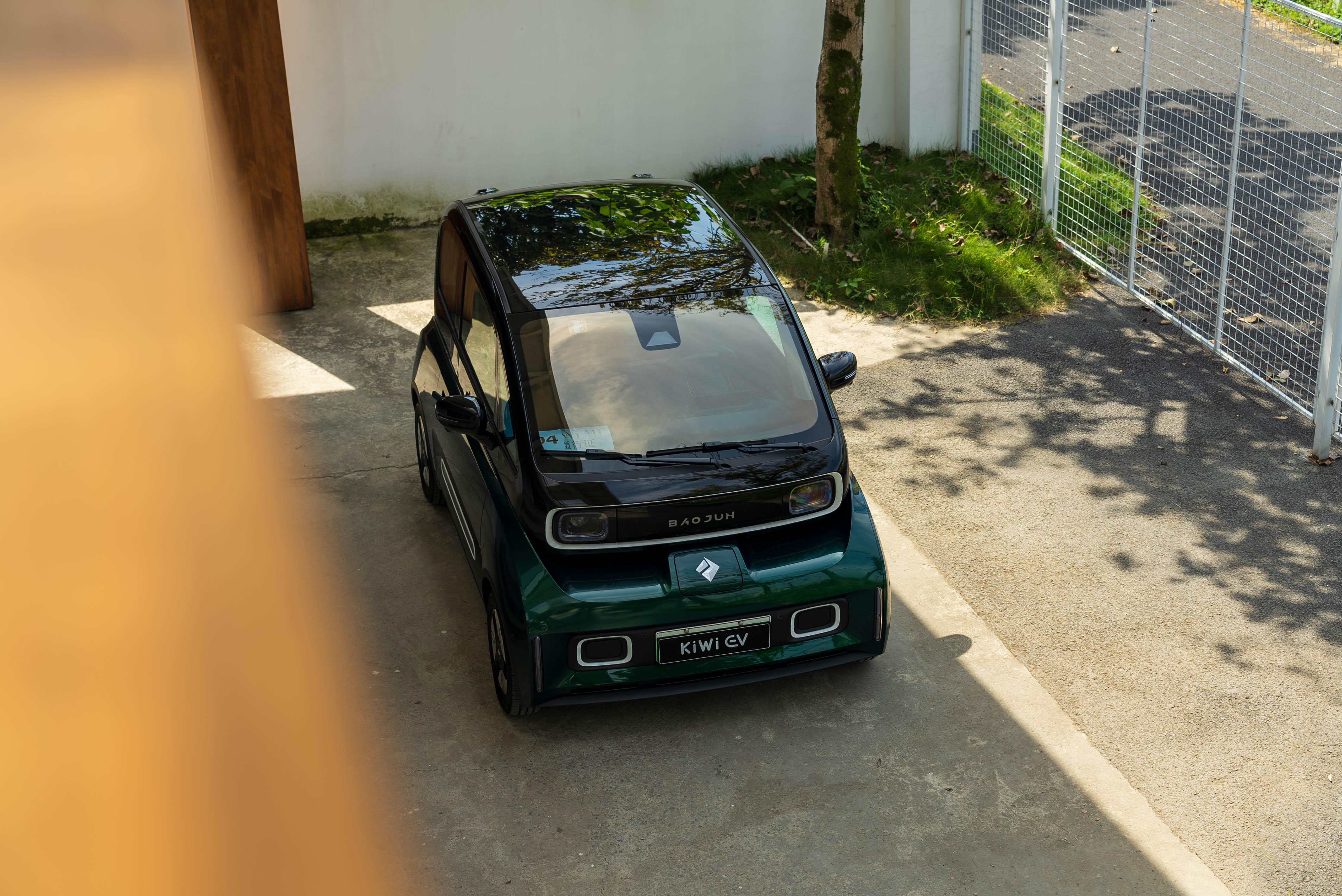
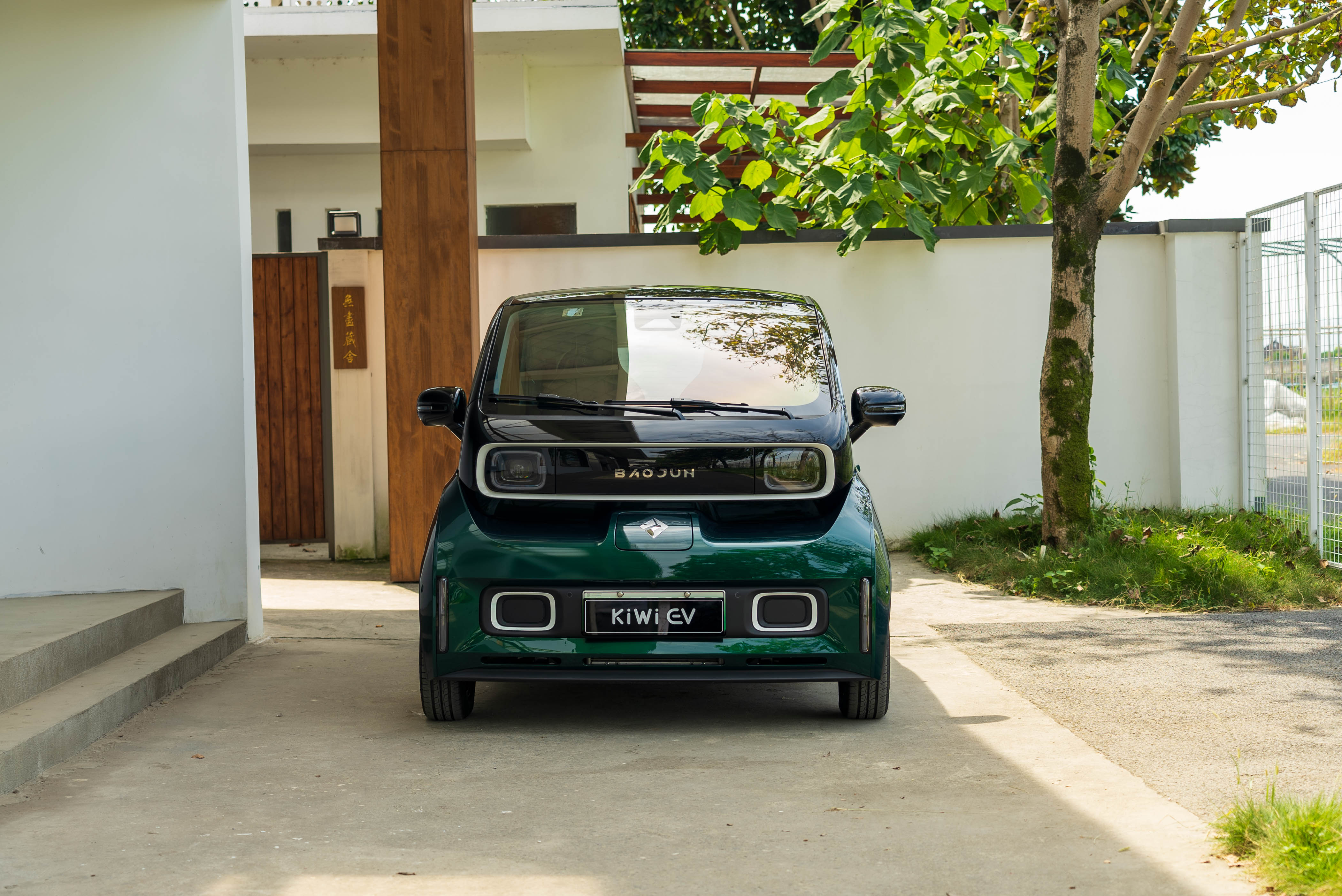 Different from the round and cute design style commonly seen in other A0-class micro cars, KiWi EV’s overall design style is rather square and angular. The exterior design style reminds me of a hidden small racing car called Angelus Kid in the “Ridge Racer” game I played in junior high school.
Different from the round and cute design style commonly seen in other A0-class micro cars, KiWi EV’s overall design style is rather square and angular. The exterior design style reminds me of a hidden small racing car called Angelus Kid in the “Ridge Racer” game I played in junior high school.
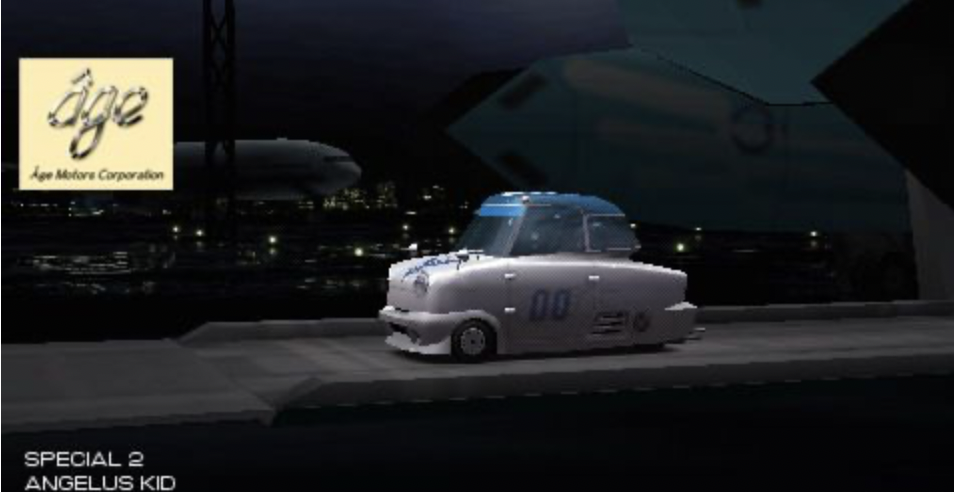
The square front headlight design is in line with the entire vehicle design language and does not appear abrupt. The LED ring-shaped daytime running lights also add a lot of quality.
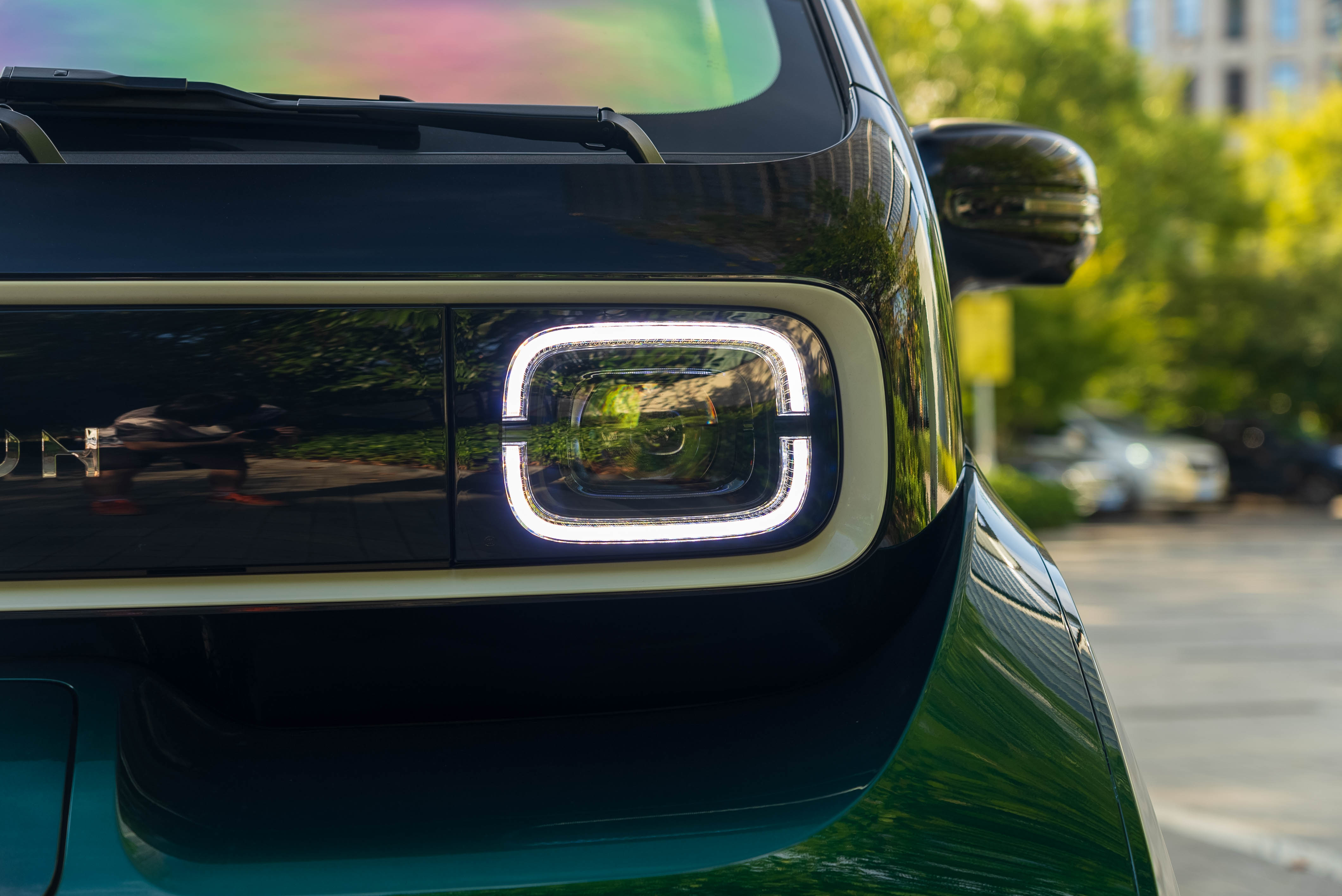
The vehicle charging port is located below the front logo, and the AC slow charging port is equipped throughout the lineup. The vehicle charging port is located below the front logo. However, only one AC slow charging port is equipped on the low-end models, and if you want a DC fast charging port, you need to pay for it as an option. This is quite strange. Although MINIEV also does not have a fast charging port, KiWi EV, which is twice as expensive as MINIEV, actually requires payment for fast charging? You should know that electric vehicles in the same price range almost all come standard with DC fast charging ports.
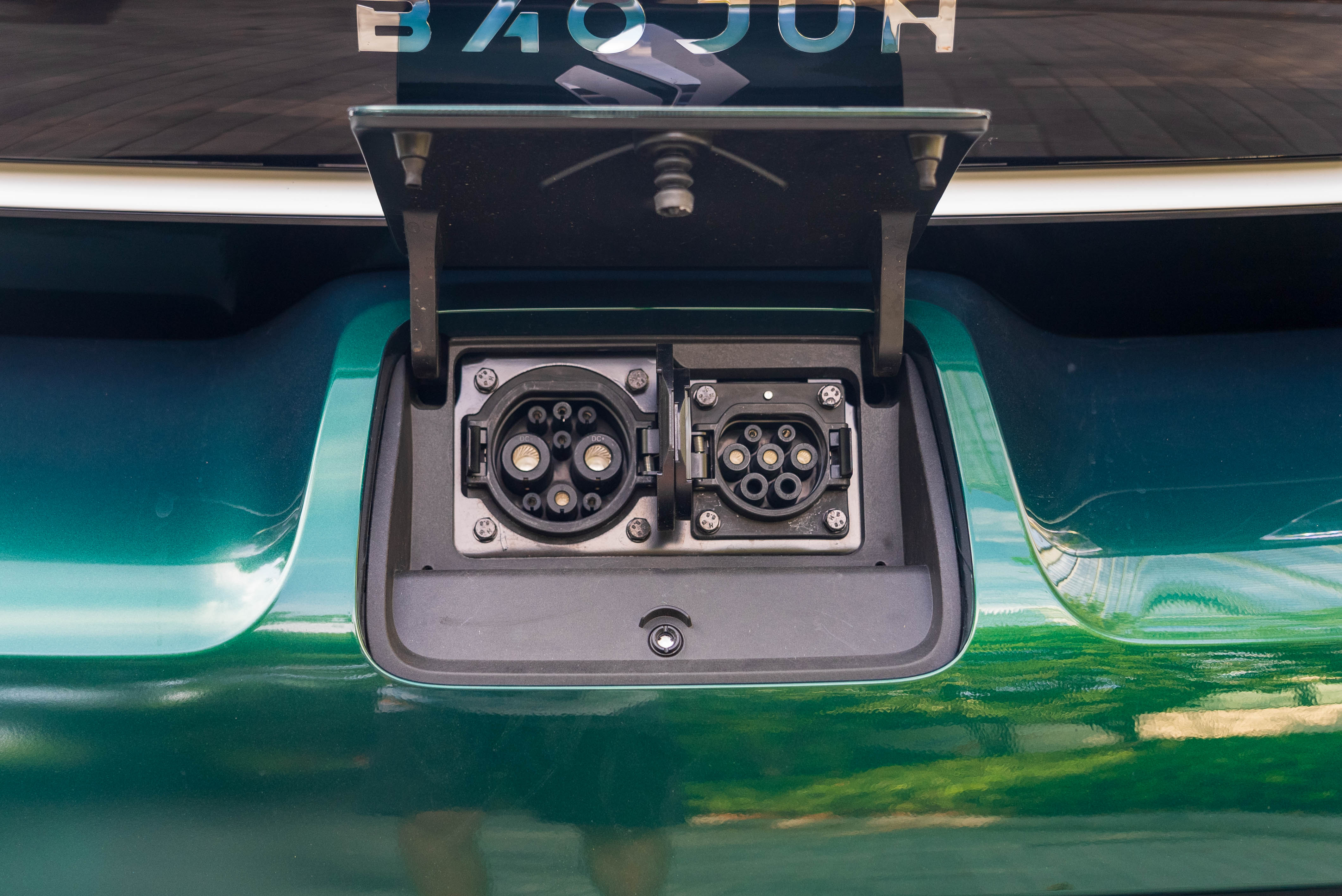
Coming to the side of the car body, KiWi EV also adopts the four-wheel-four-corner design like most micro cars. The four wheels almost completely occupy the edge of the body. Although the length of the car body is only 2,893mm, the wheelbase is 2,020mm.
The extremely short front and rear overhangs make the whole vehicle without the distinction between the front and rear, coupled with the nearly 90-degree corner cutting around the body, making the entire body look like a “van” shape visually.
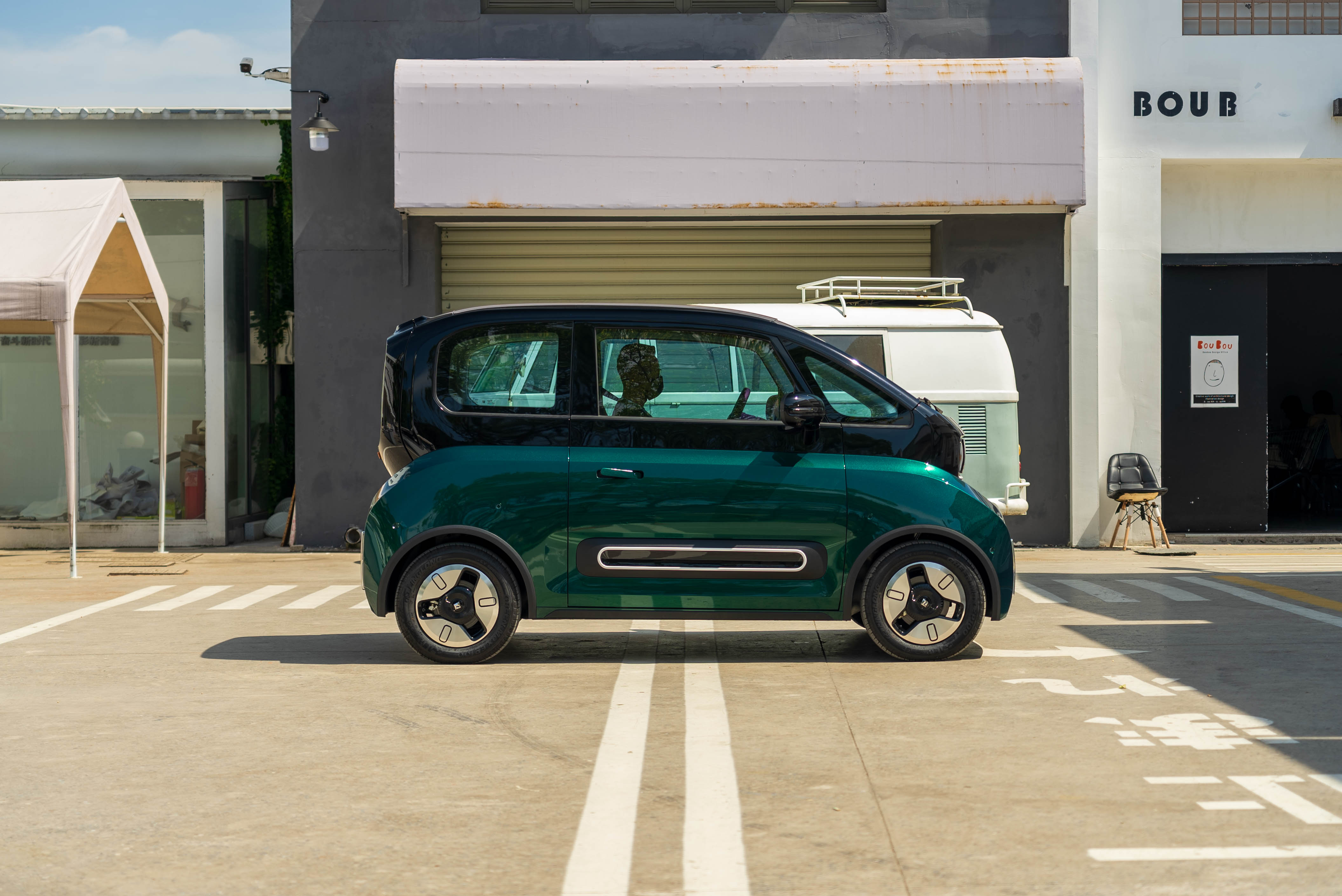
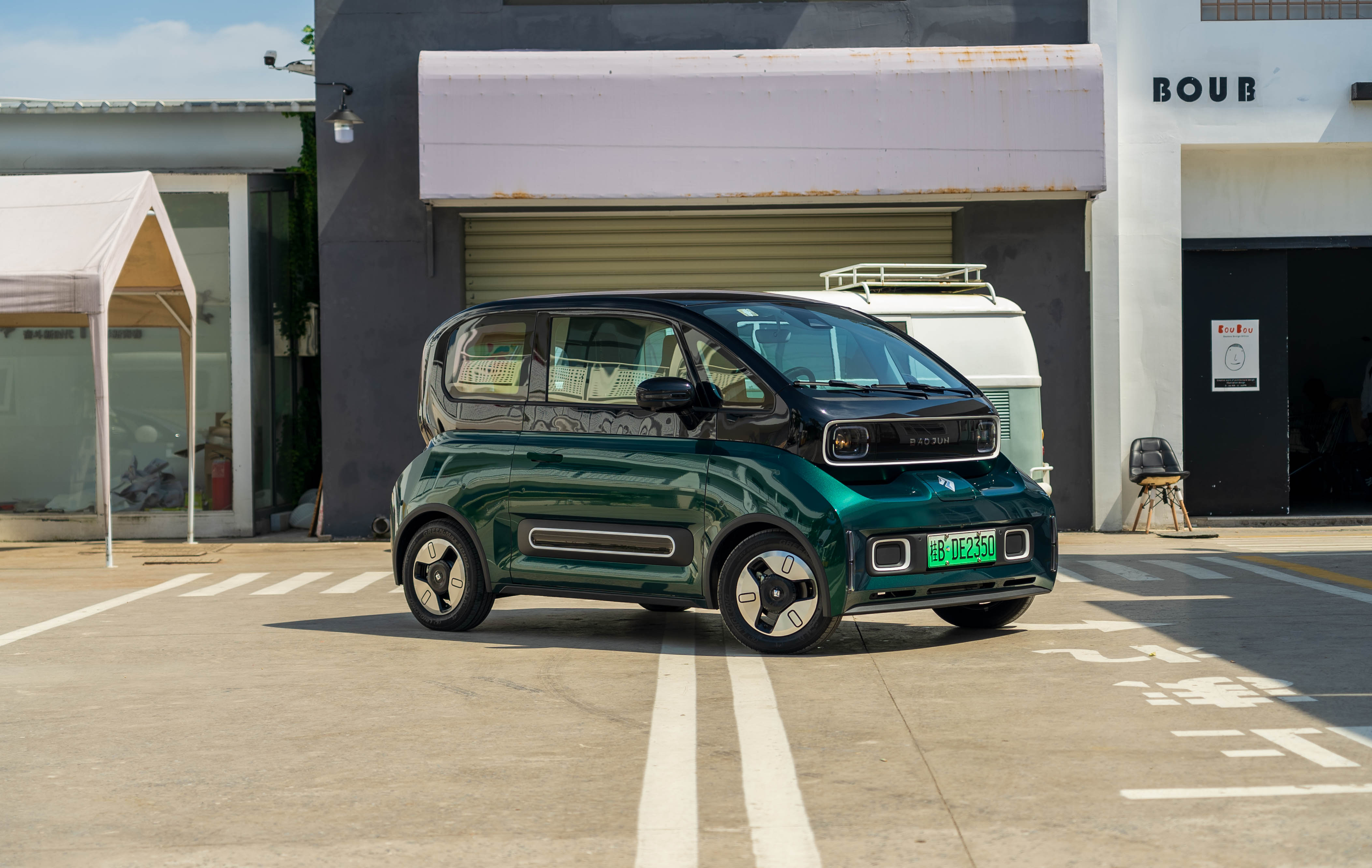
The four vertical wheels almost equal the cabin area, plus the black-and-green stitching color scheme, creates a floating cabin effect. This is so cyberpunk spaceship-like. I especially like the two-stage design of the rear part, which visually separates the cabin and the body.
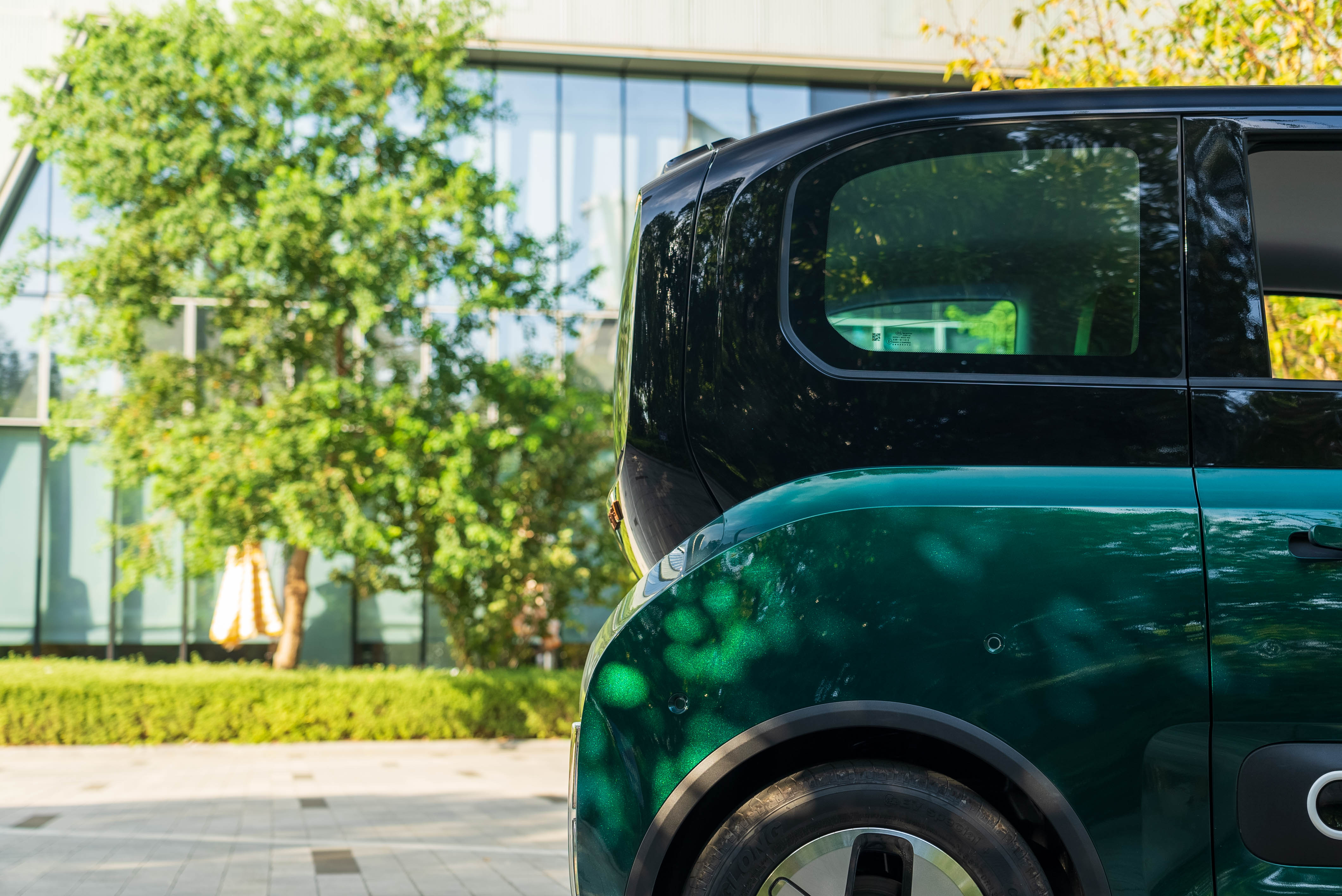 To provide a “one-box car” design and consistency with the car body, the A pillar of KiWi EV has been extended forward with a separated design to reduce blind spots in driving visibility. The door handles also adopt a rare hidden design at this level.
To provide a “one-box car” design and consistency with the car body, the A pillar of KiWi EV has been extended forward with a separated design to reduce blind spots in driving visibility. The door handles also adopt a rare hidden design at this level.
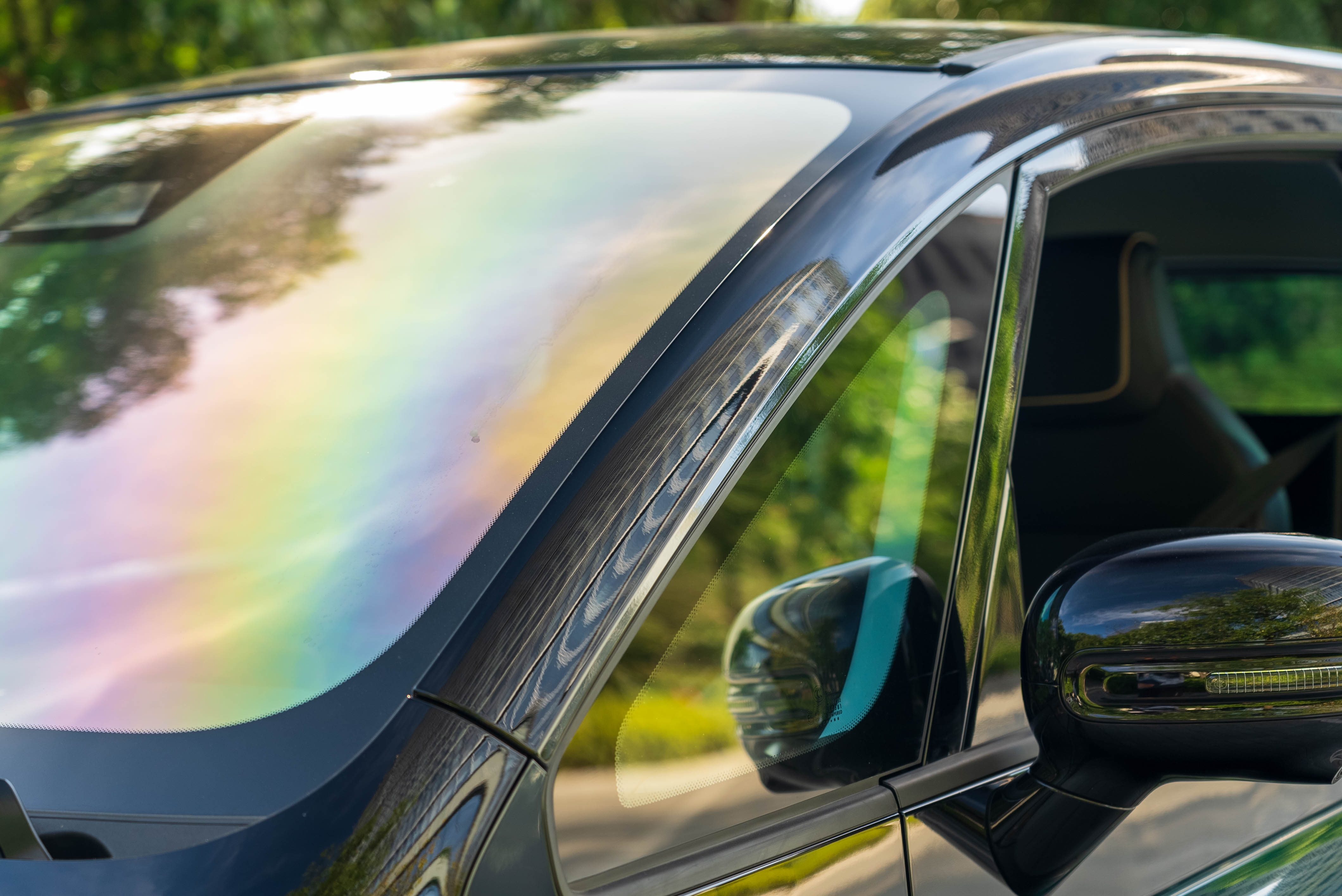
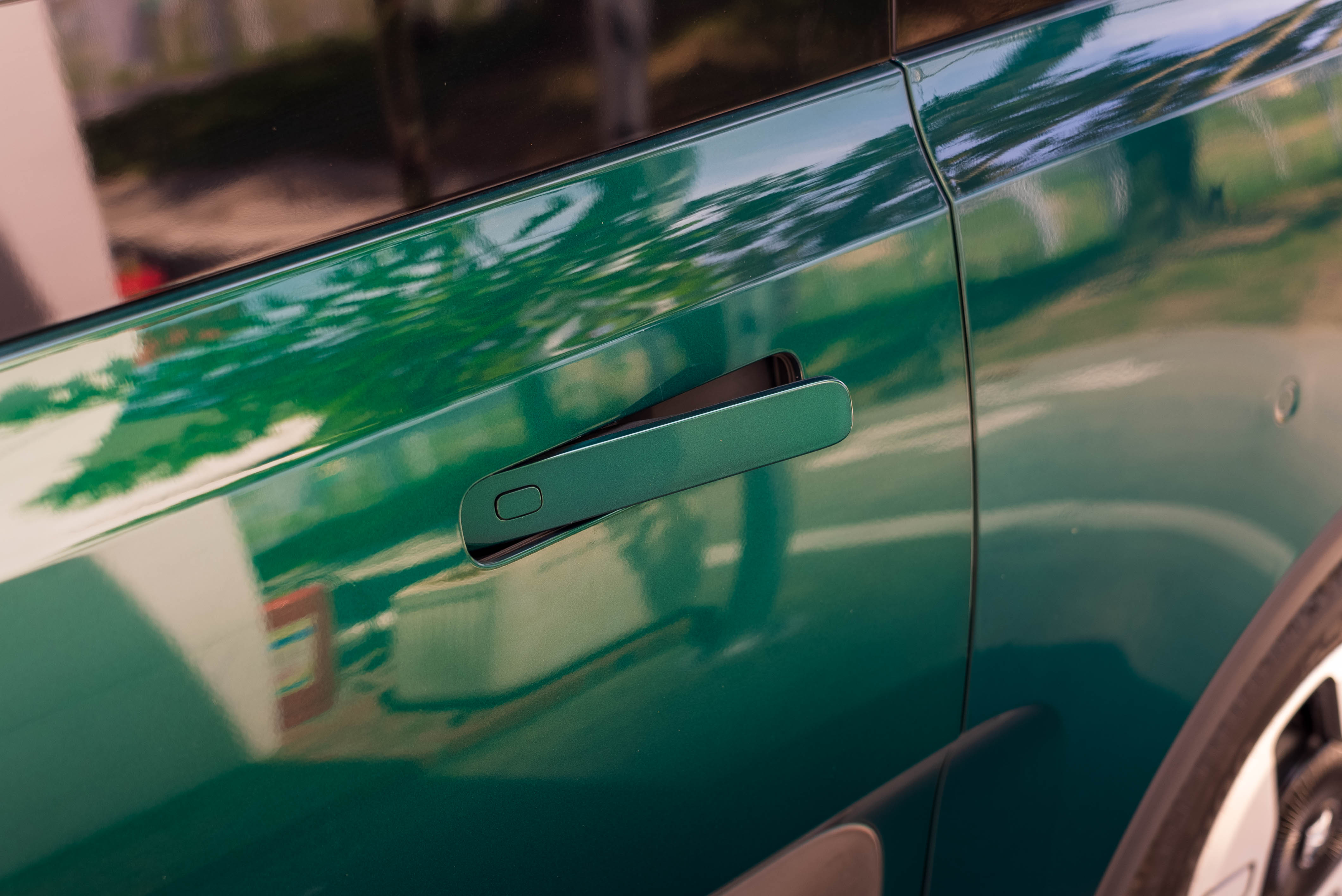
The tire size of both the front and rear wheels of KiWi EV are 155/70 R13 domestically produced Linglong tires, specially designed for micro electric vehicles. This set of tires can help save energy and control tire noise, but the narrow tire width may result in insufficient grip, and the 13-inch small wheel hub may not provide good comfort on daily roads. Slightly larger pits or speed bumps can be clearly felt and the tires may struggle.
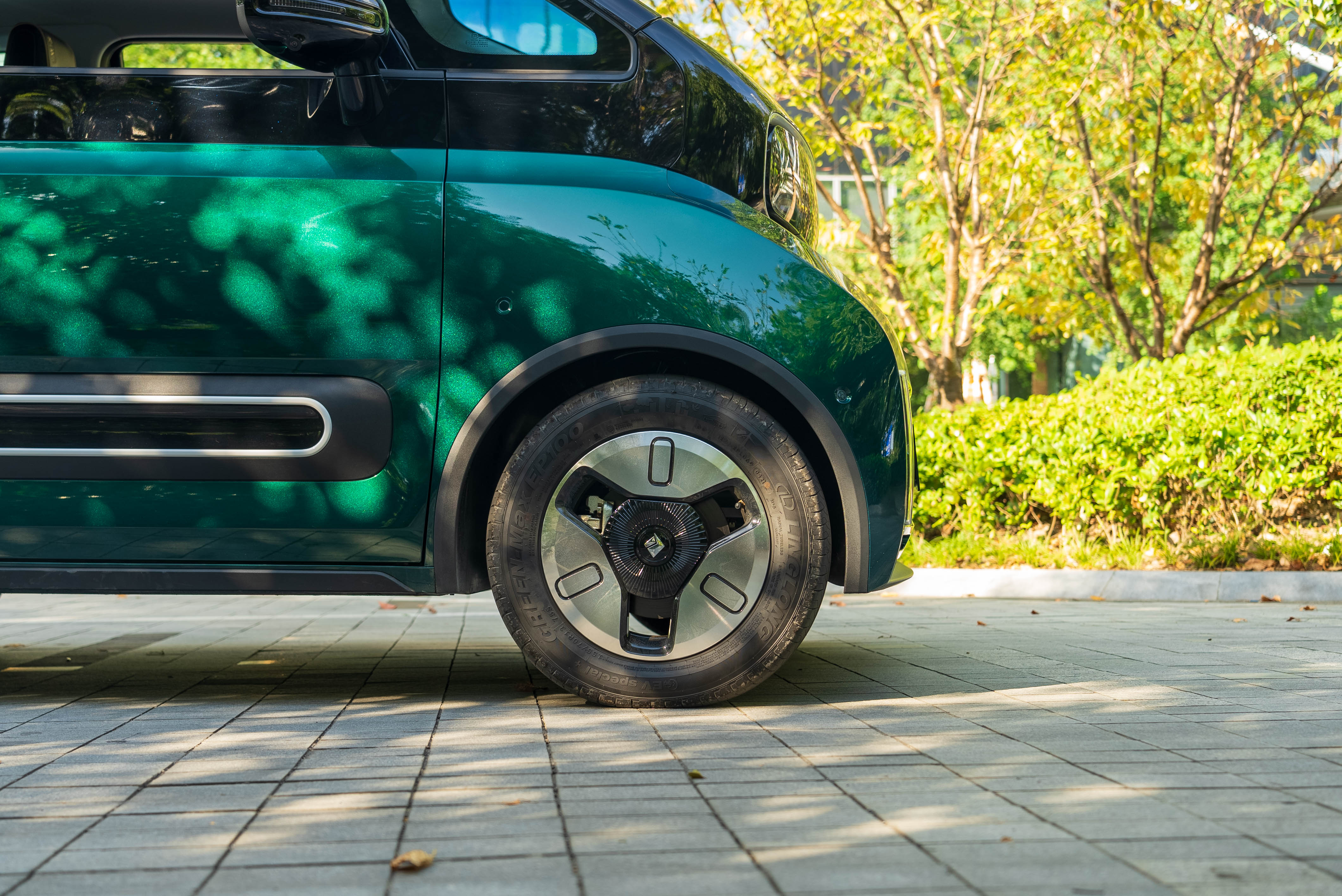
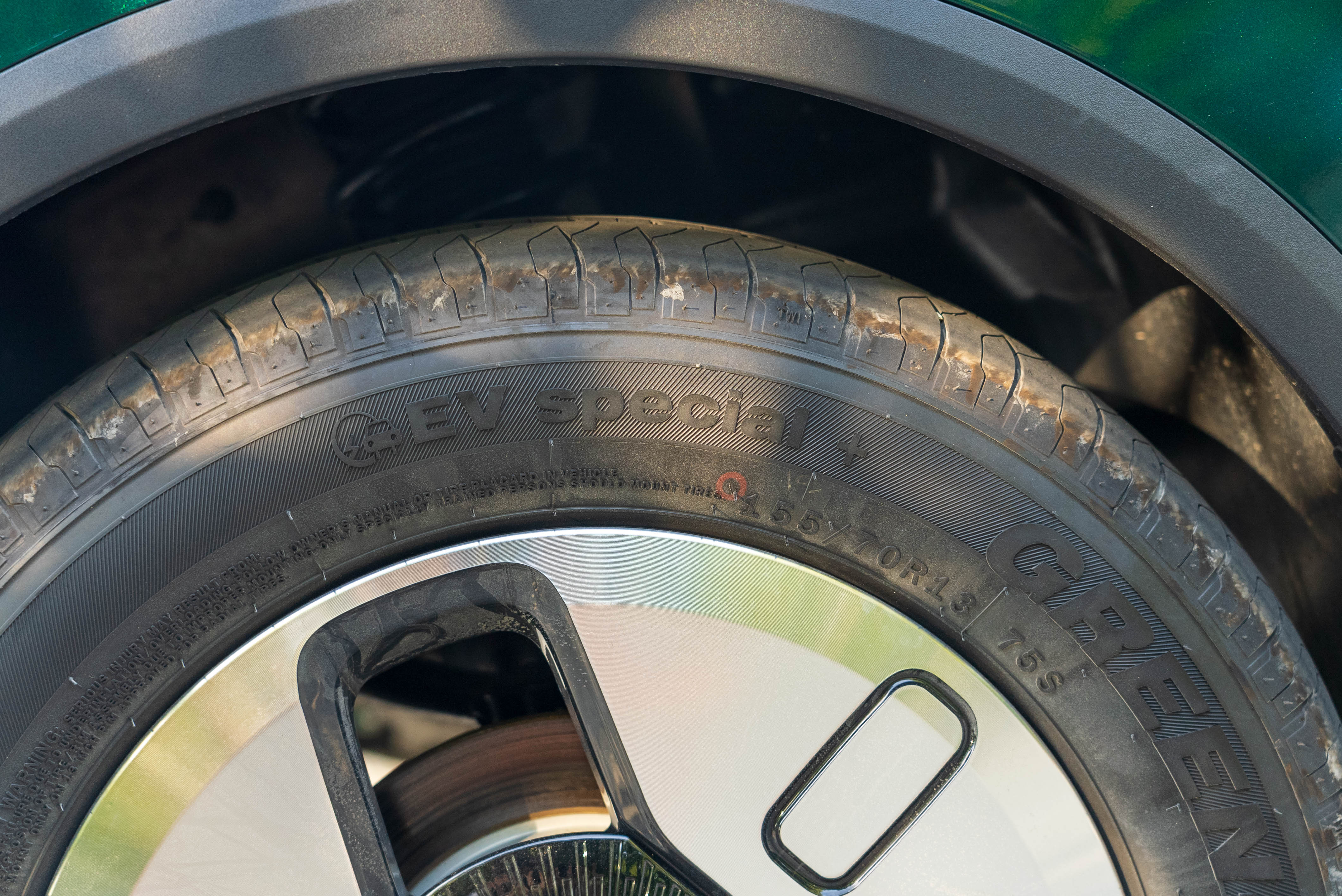
The LED taillights of KiWi EV are symmetrically designed, with the brake lights placed below the rear of the car. The tail design is still a square and straight line design consistent with the overall body, full of delicacy.
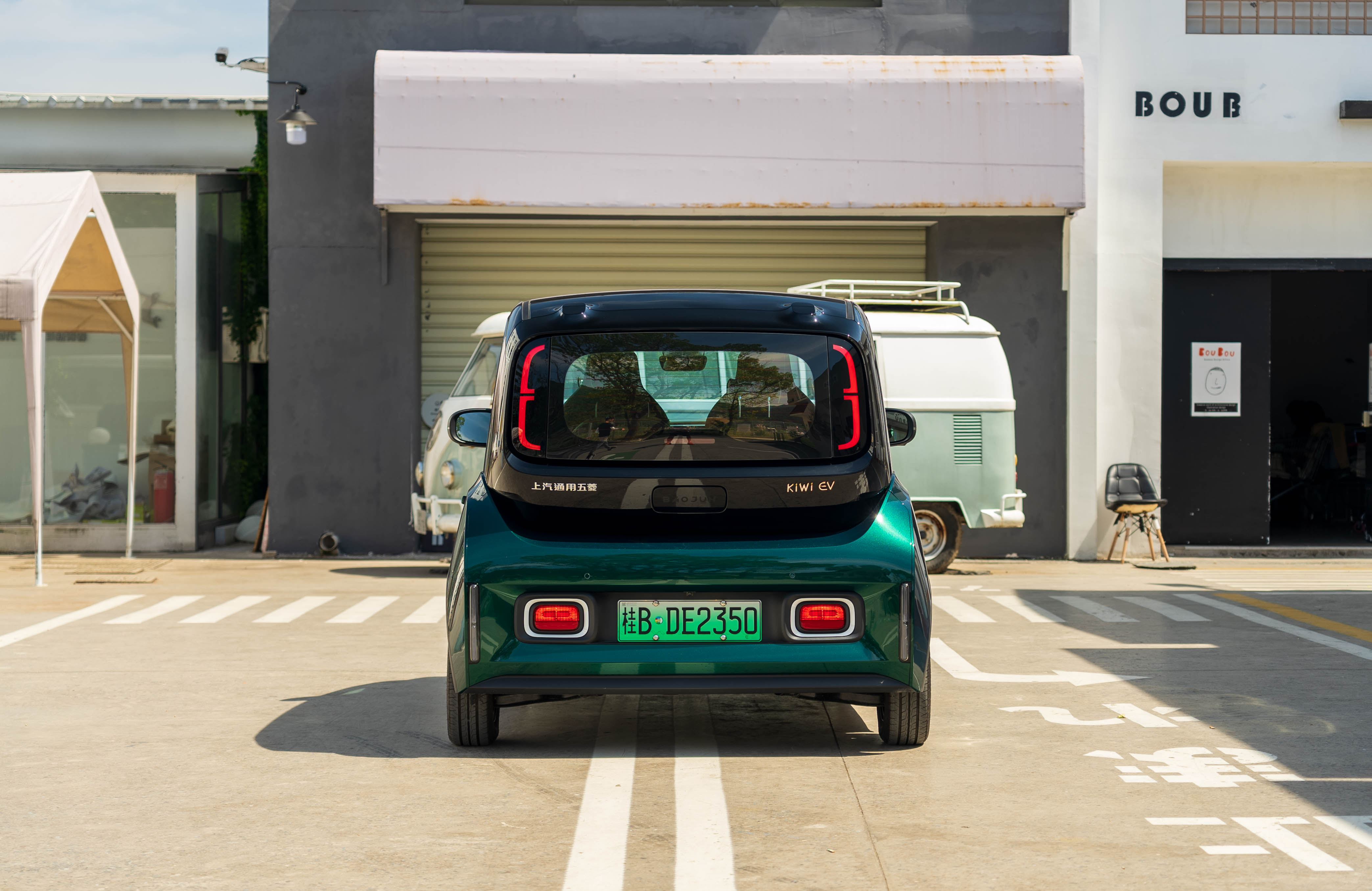
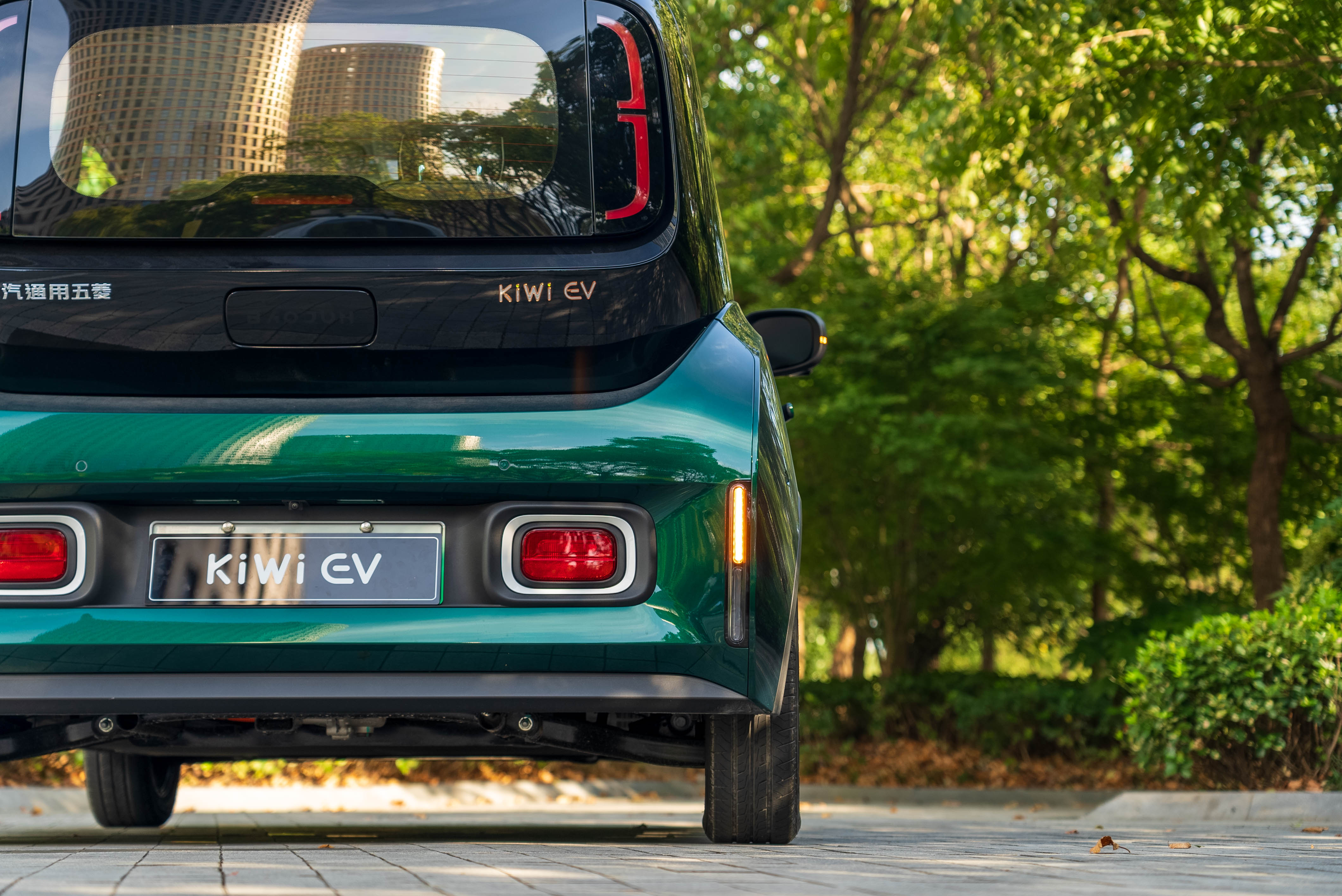
It can be said that KiWi EV has put a lot of effort into its exterior design, which is also the biggest difference between it and its competitors in the microcar market. Not only does it differentiate itself from vehicles like MINIEV, almost all models in the current A0 microcar market present a simple and cute style. KiWi EV has a distinctive design that is both unique and not overly strange. It’s no wonder that even the grandpa riding a tricycle on the side of the road couldn’t resist taking a second look at it.
KiWi EV comes in six colors, with color names that exude a “young” vibe. The increase and change of color options is one of the differences between KiWi EV and its predecessor, the E300 Plus.## Configuration…
Let’s first compare a set of data.
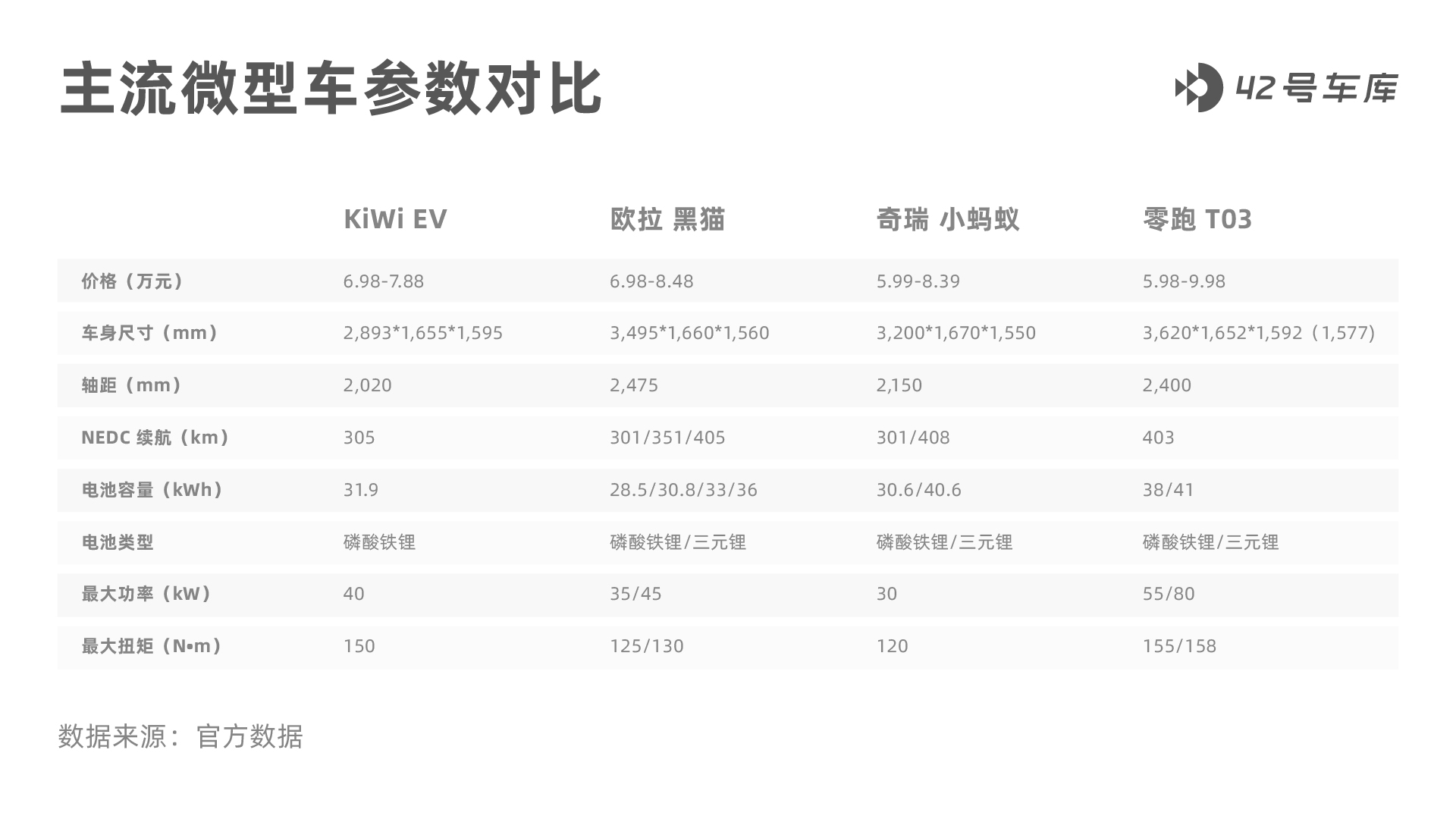
From the perspective of body size, KiWi EV is not very competitive compared to its peers. Its body size and wheelbase are not ideal. However, the front row space is well protected and doesn’t feel particularly cramped. The front headroom is more than a fist, and the fully open front footwell also adds transparency.
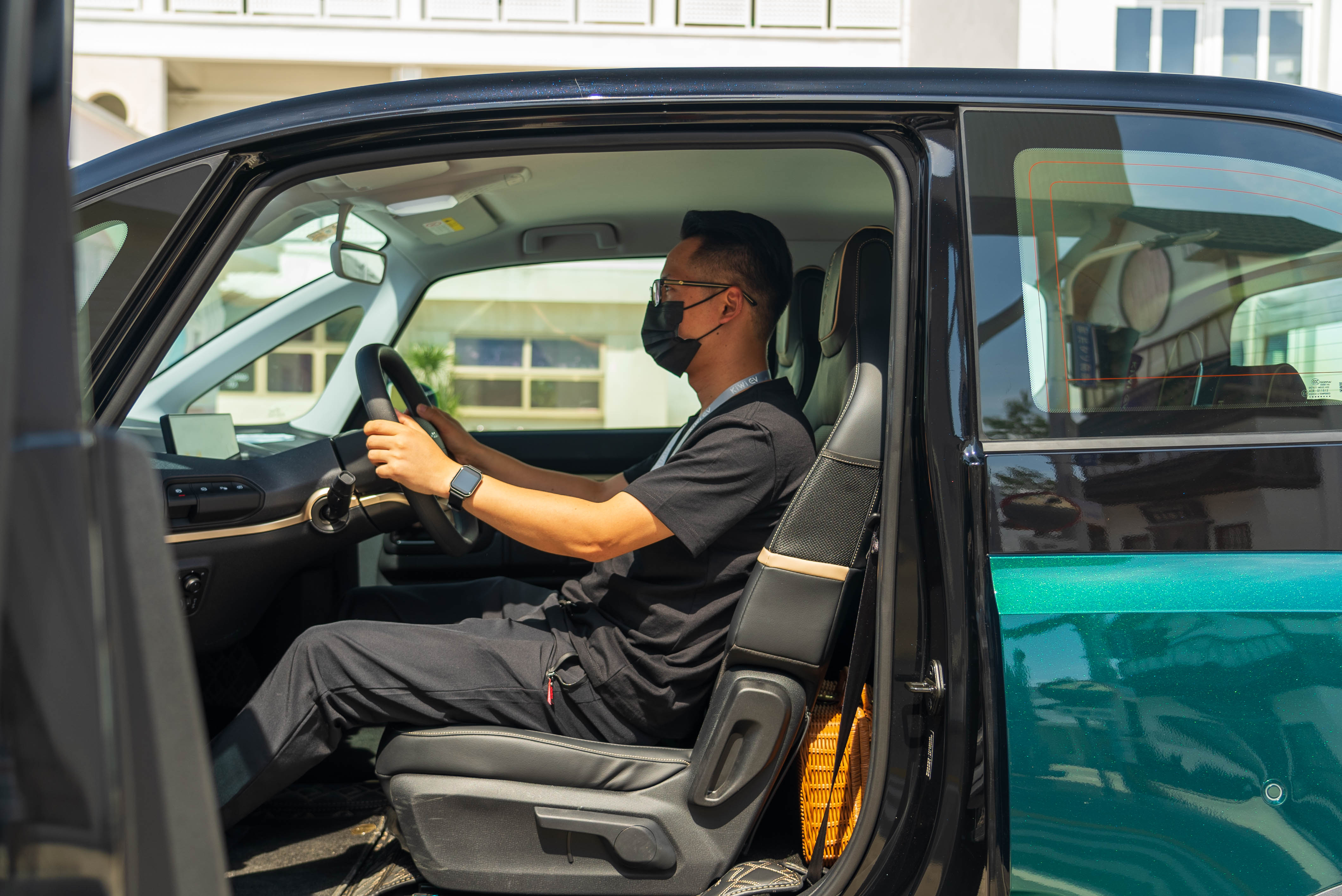


The seat texture is average, and the seats are designed with leather and stitching. However, the seat padding is a bit hard, and the comfort and wrapping are not high. The perforated leather can slightly alleviate the back’s heat during long-time driving. It’s not surprising to manually adjust the driver seat six directions, but the problem is that adjusting the seat back angle requires pulling the handle below the seat. When pulling the handle, the seat will automatically move forward, which requires a lot of effort to adjust the backrest angle normally. However, considering that this is a design for the convenience of rear passengers to enter and exit, it can also be understandable.
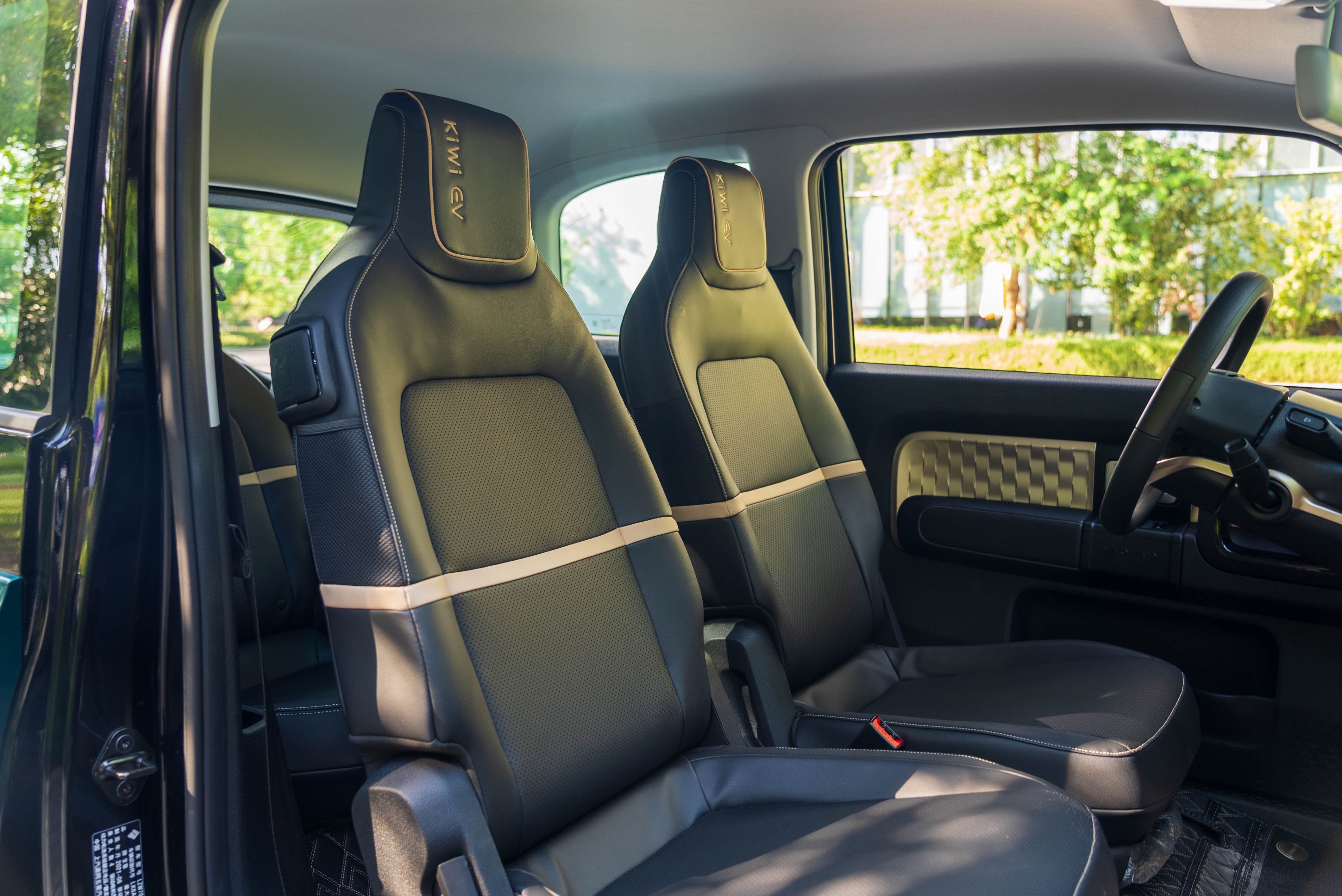
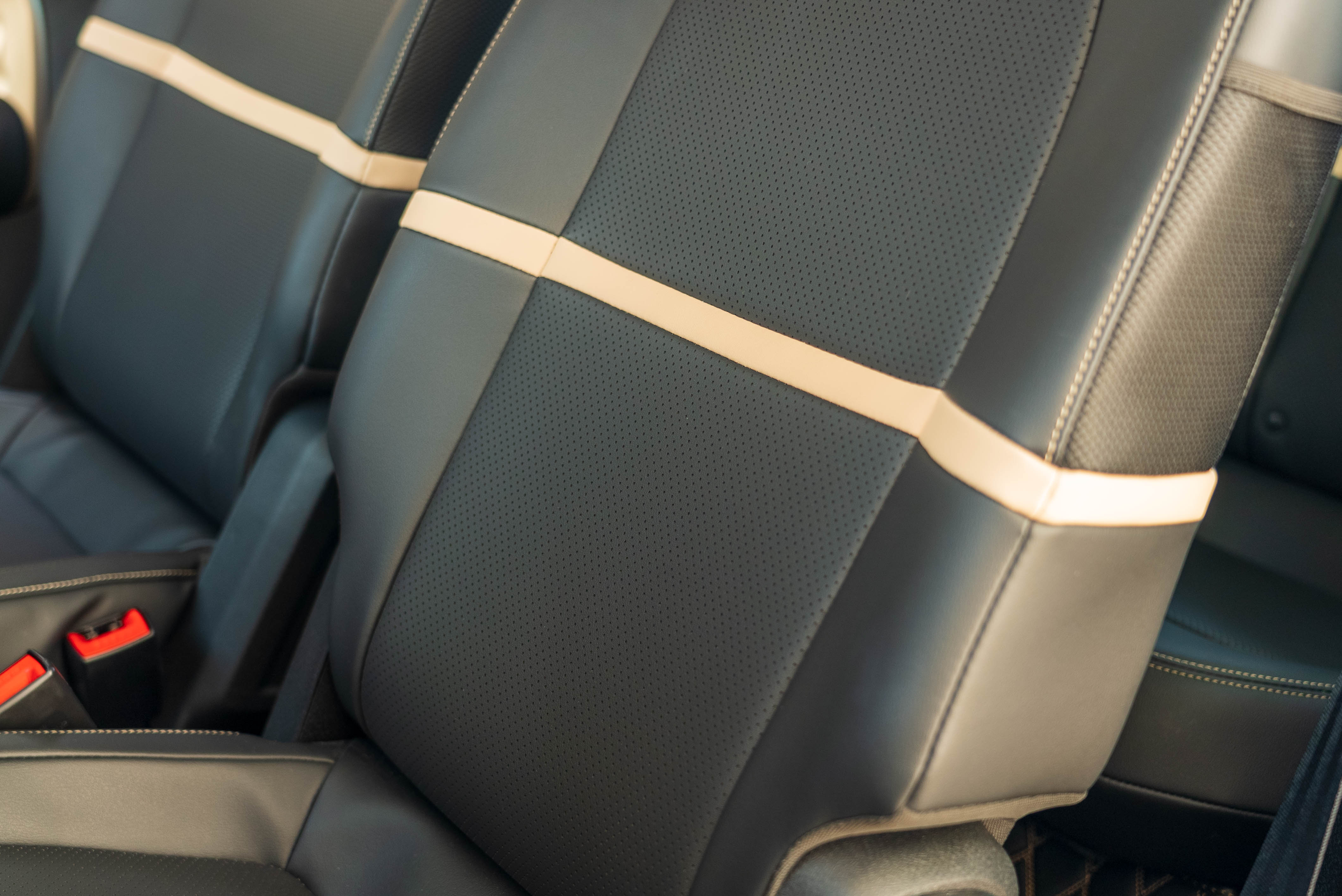
Now let’s talk about the rear… The two-door car design requires the front seats to be folded down to enter the rear seats. But due to the small body size, entering the rear is not particularly convenient, and under normal sitting posture of the front row (178cm), the rear passenger space is almost at its limit. Sacrificing some front space for the rear space is also barely acceptable, but considering the car length is less than 3 meters, don’t expect too much for the rear space.
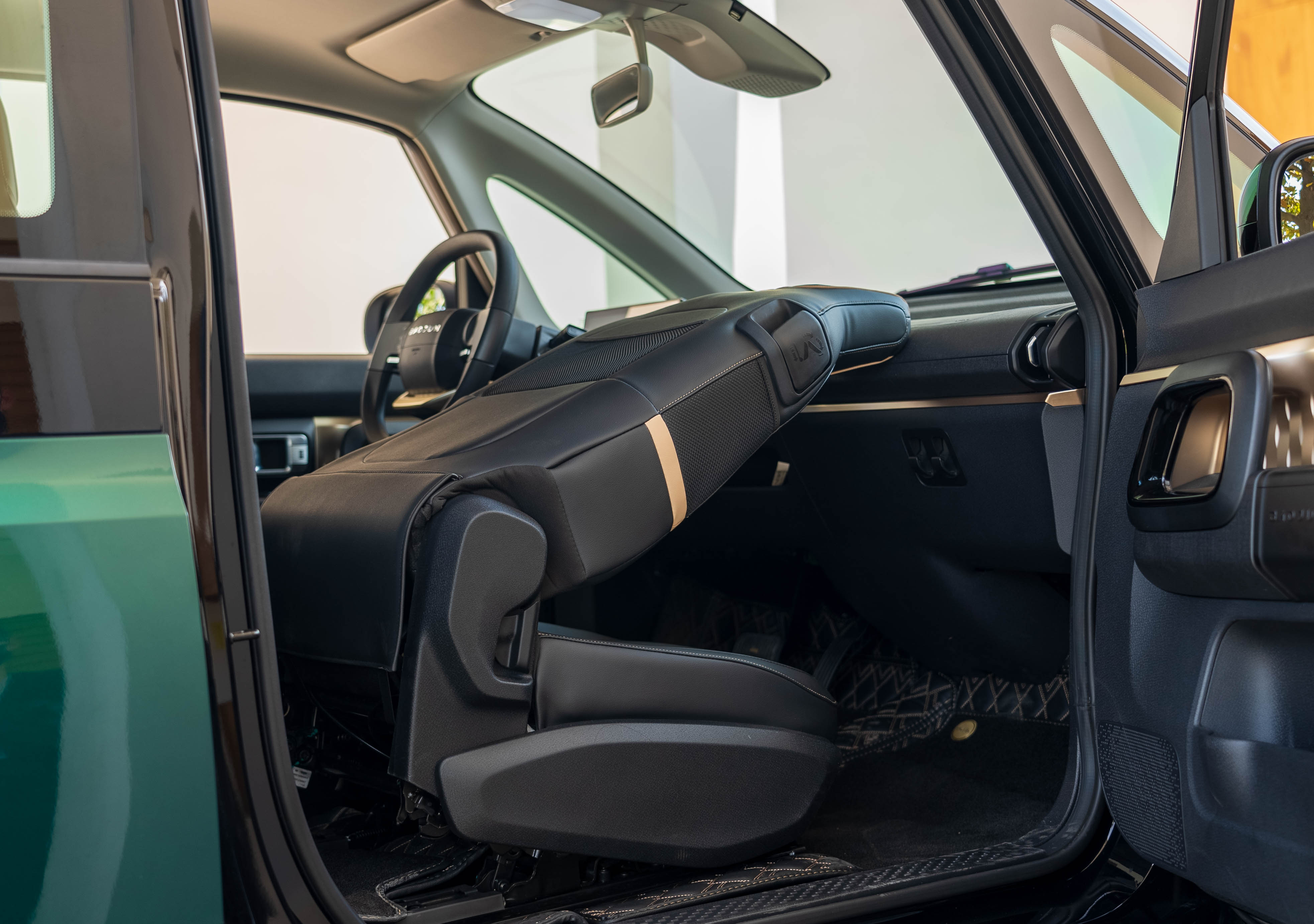
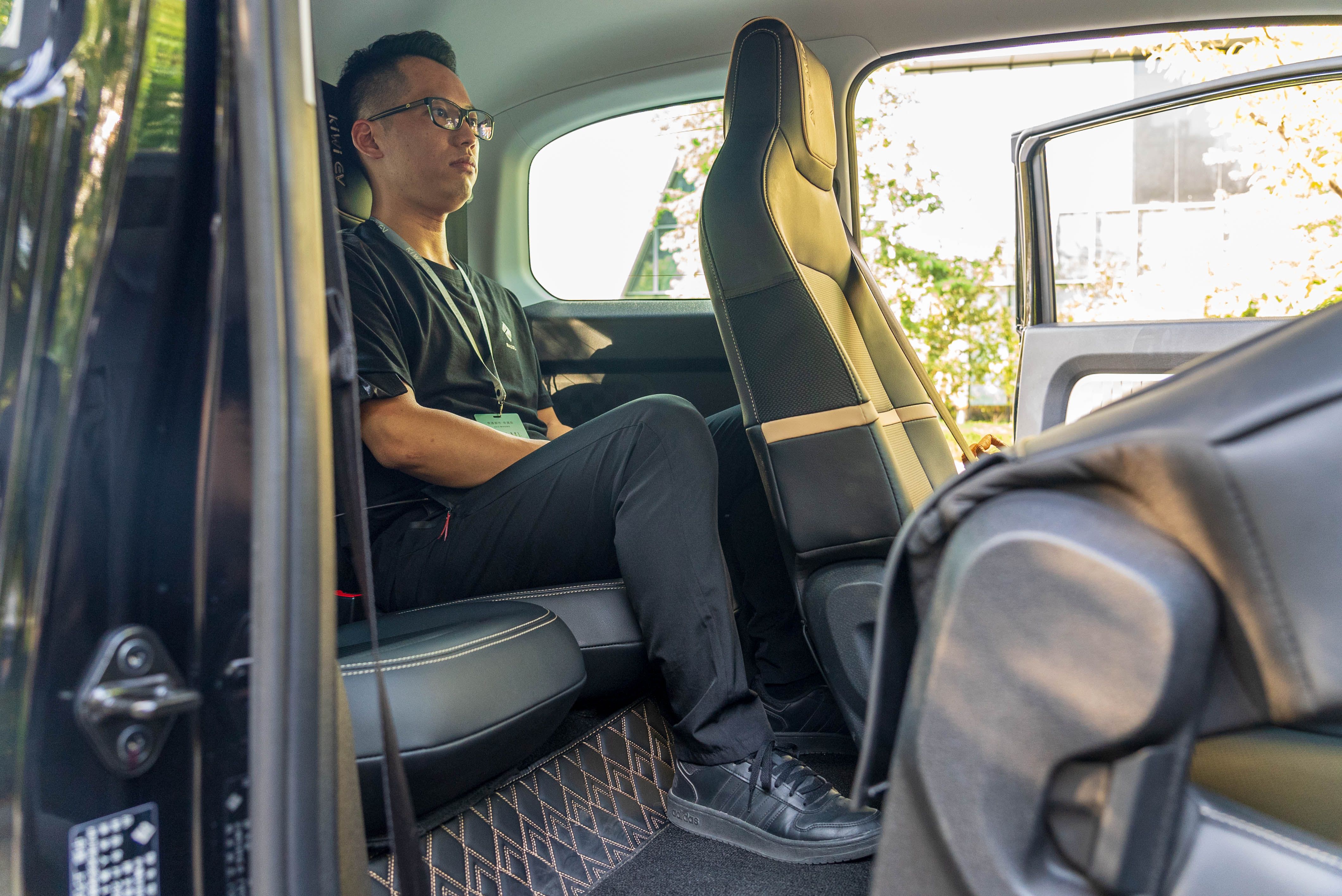
As a city commuter car, KiWi EV generally does not have a high demand for the use of the rear seats. Most of the scenarios are for indoor commuting with two people, and the rear seats are generally used to store luggage or bags. For short-distance use in the city, the space of KiWi EV is sufficient.
The trunk can be opened with the physical wrench at the rear logo. In terms of space, there is no storage space without folding the rear seats. You need to fold the rear seats to be able to use the space, which is similar to MINIEV. The opening size of the trunk is good, and luggage that can be stored in the trunk can be successfully put in.
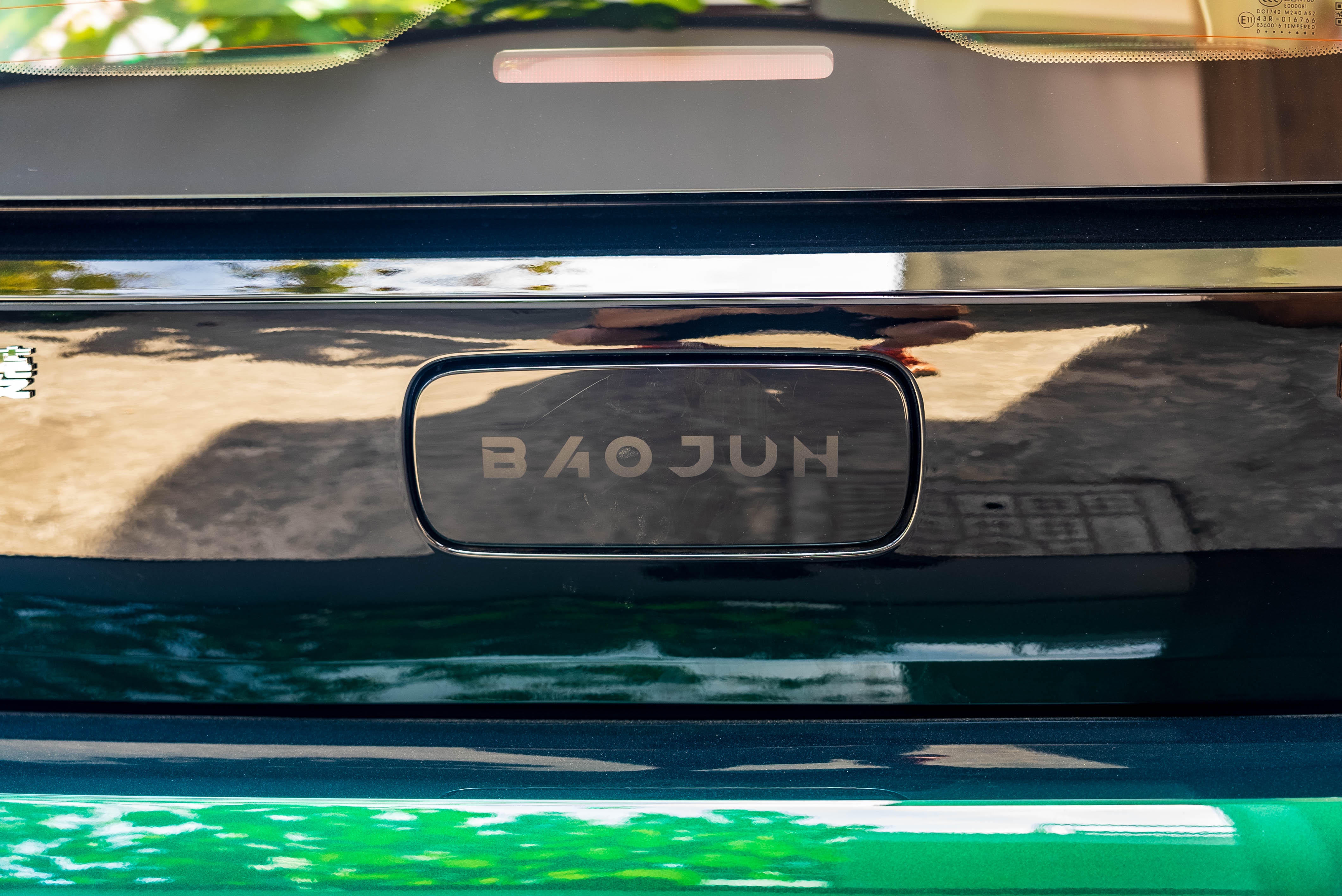
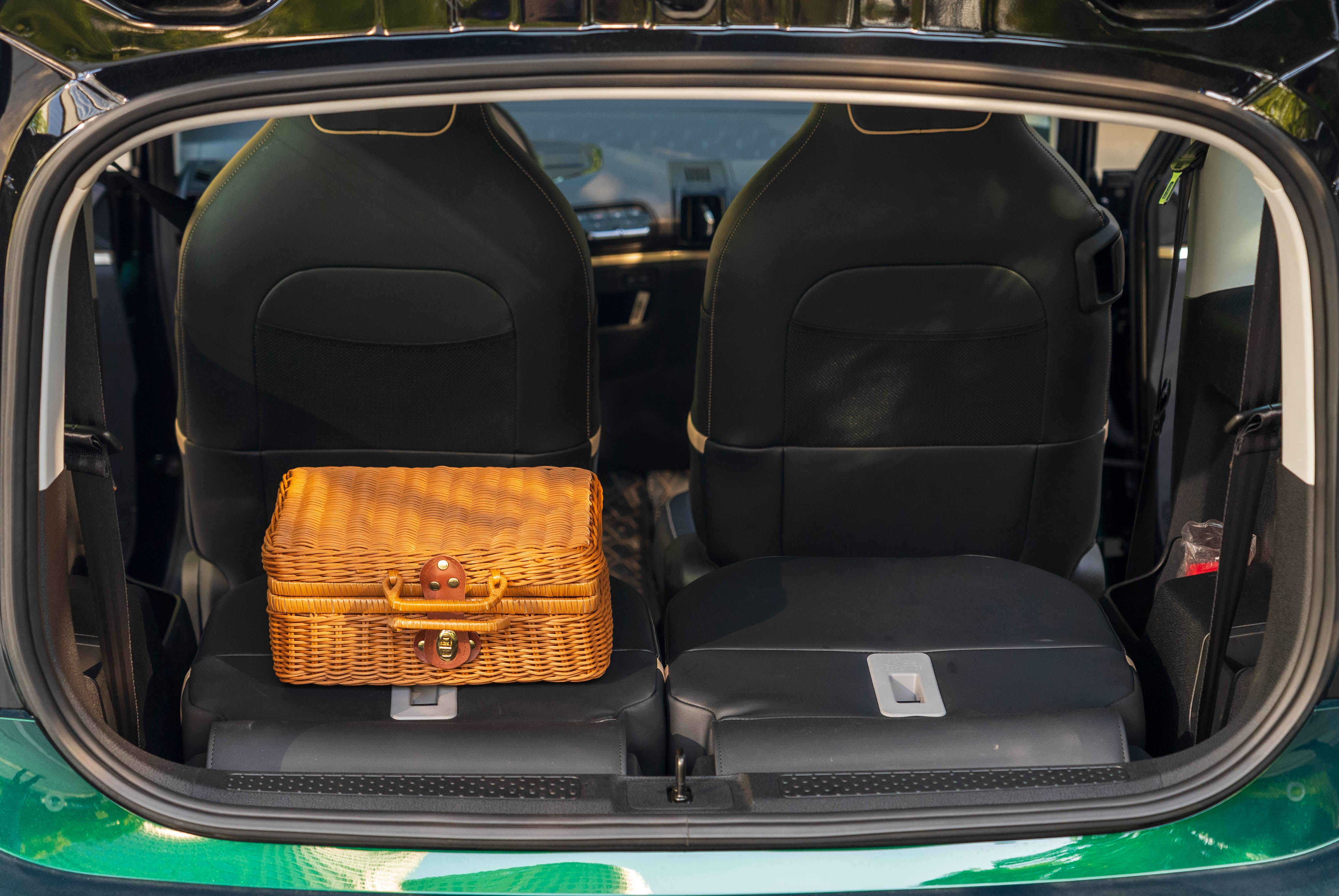
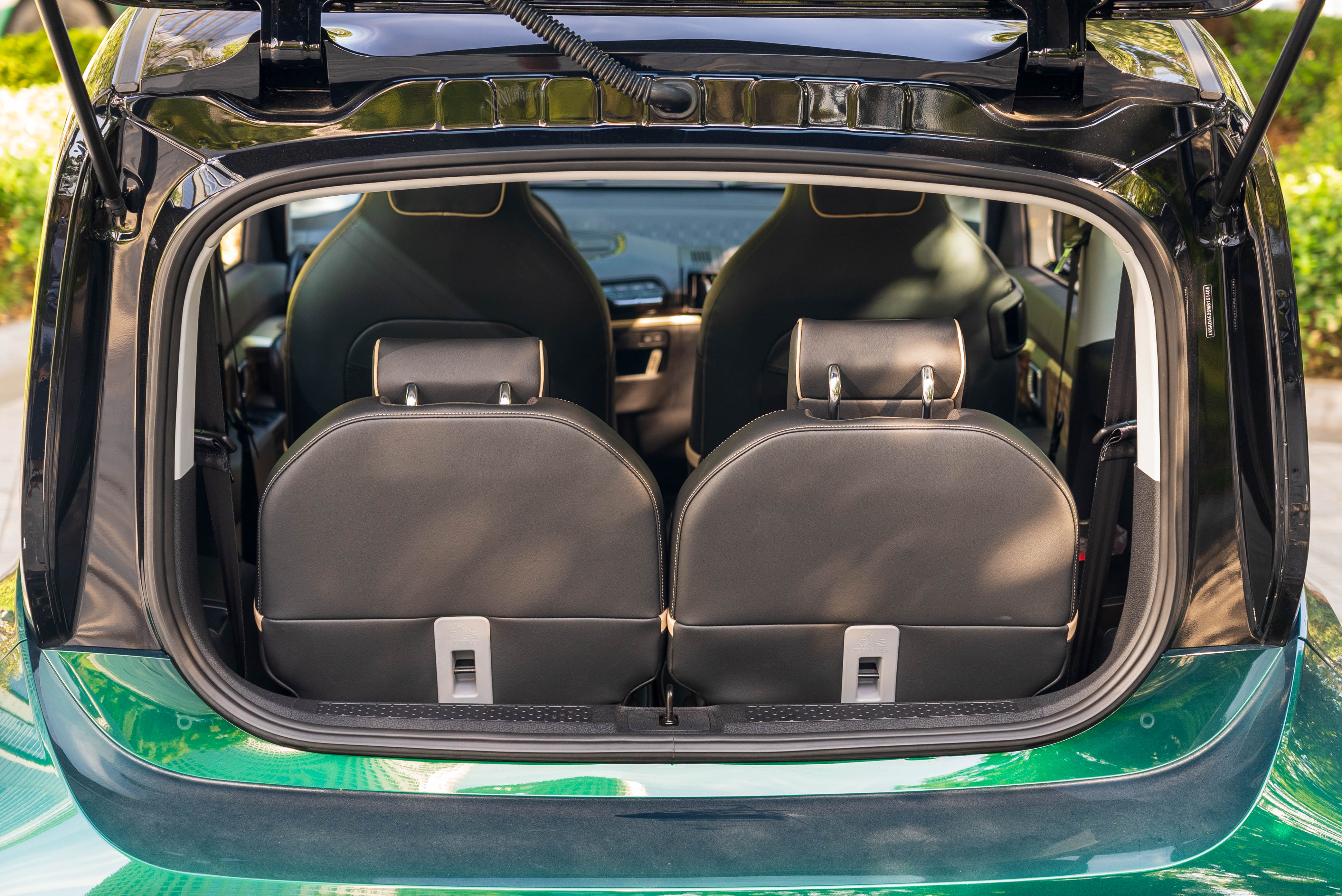
In terms of storage in the car, since there is no central armrest box or glove box, the storage space in the front row is only on the door panel. There is also a net pocket on the side of the front seat for hanging mobile phones, and the storage space on both sides of the rear seat is large and deep, and there is a space specially designed for water. This deserves a thumbs up. At the same time, both the front and rear rows are equipped with USB charging ports, and the overall practicability is still satisfactory.
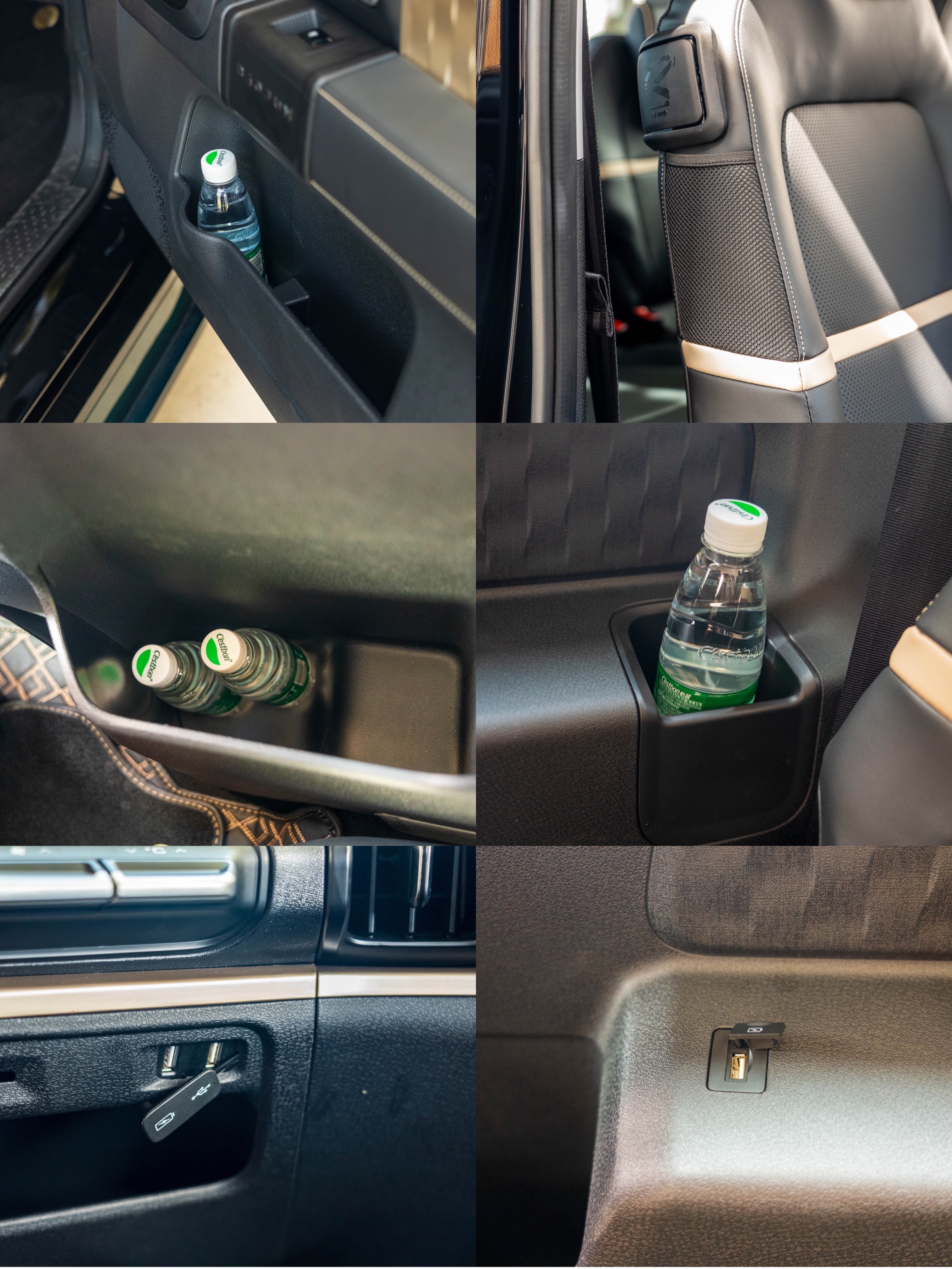
The interior design is not particularly stunning, but there are many small details that are controlled well. Although the materials are still mainly hard plastic, the black and gold color matching design and the leather stitching on the door panel also increase the quality sense in the details. The overall assembly process is very in place, and the seams of the interior covering parts are small, and there will be no noise during bumpy road sections.
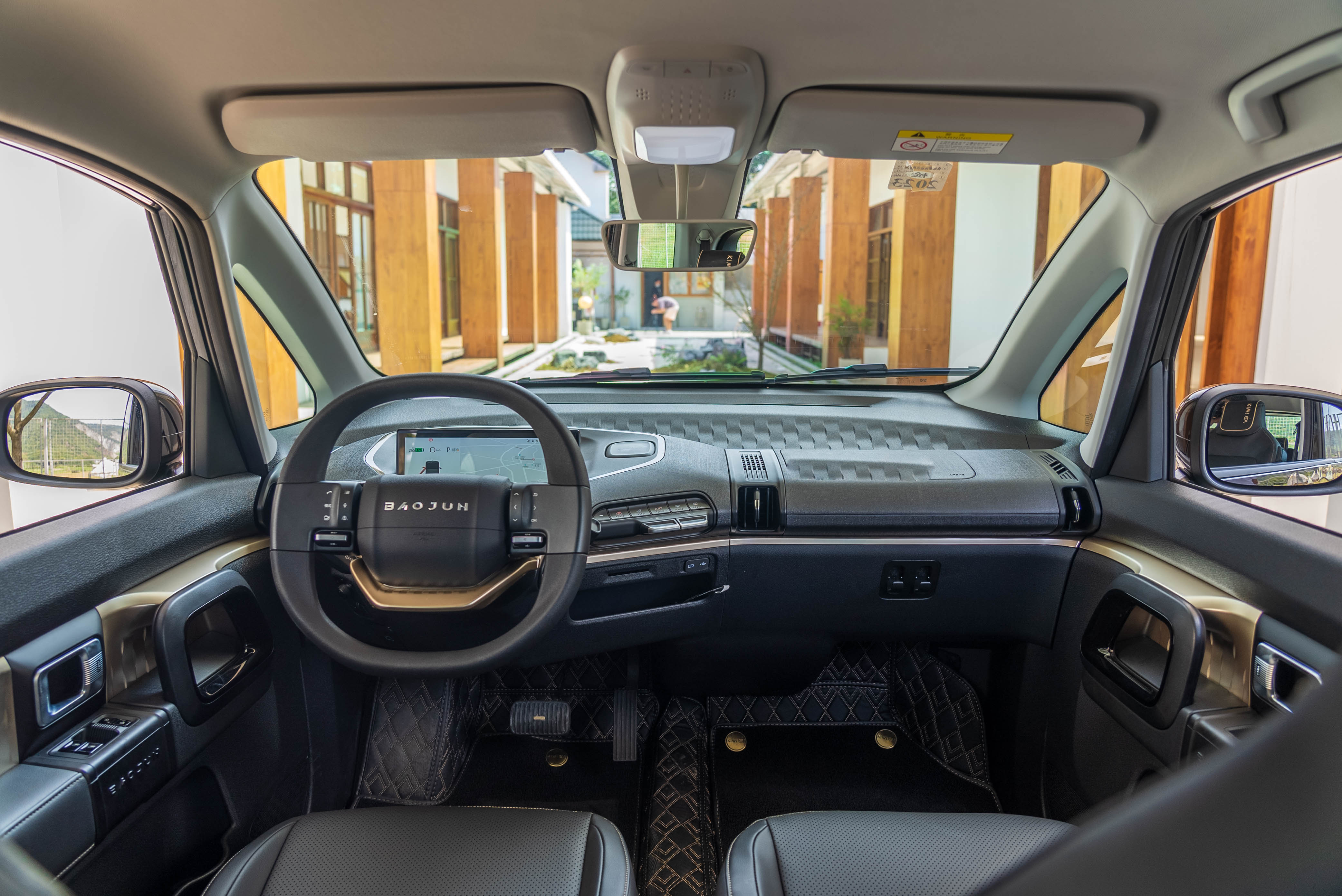
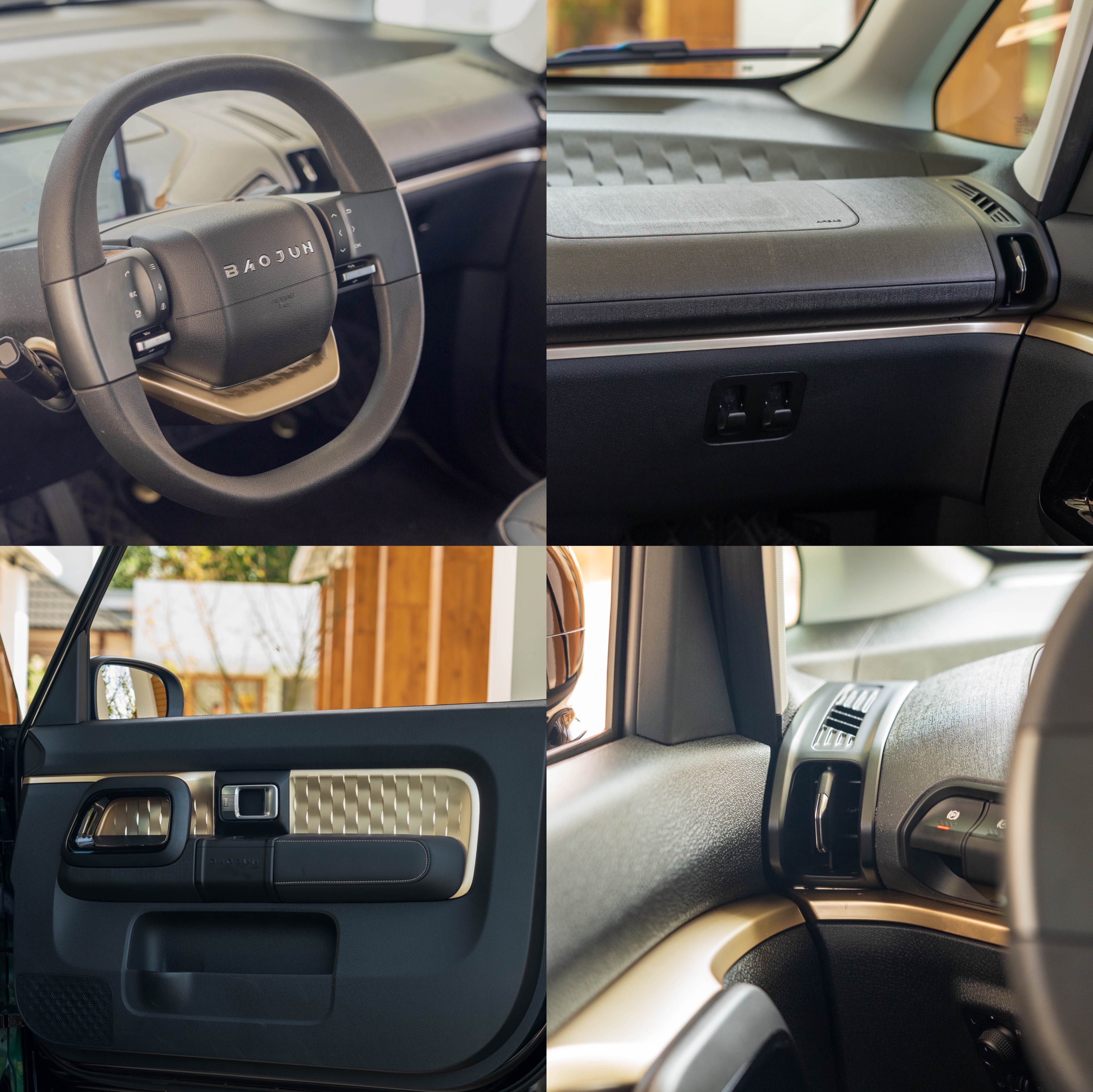 The car screen is similar to Tesla, which is the only screen in the entire car. The 10.25-inch screen displays vehicle information, navigation content, etc., but also retains physical buttons for controlling the air conditioning. This is quite good because controlling the air conditioning is a frequently used function when driving a vehicle, and being able to adjust the air conditioning intuitively will greatly improve convenience.
The car screen is similar to Tesla, which is the only screen in the entire car. The 10.25-inch screen displays vehicle information, navigation content, etc., but also retains physical buttons for controlling the air conditioning. This is quite good because controlling the air conditioning is a frequently used function when driving a vehicle, and being able to adjust the air conditioning intuitively will greatly improve convenience.
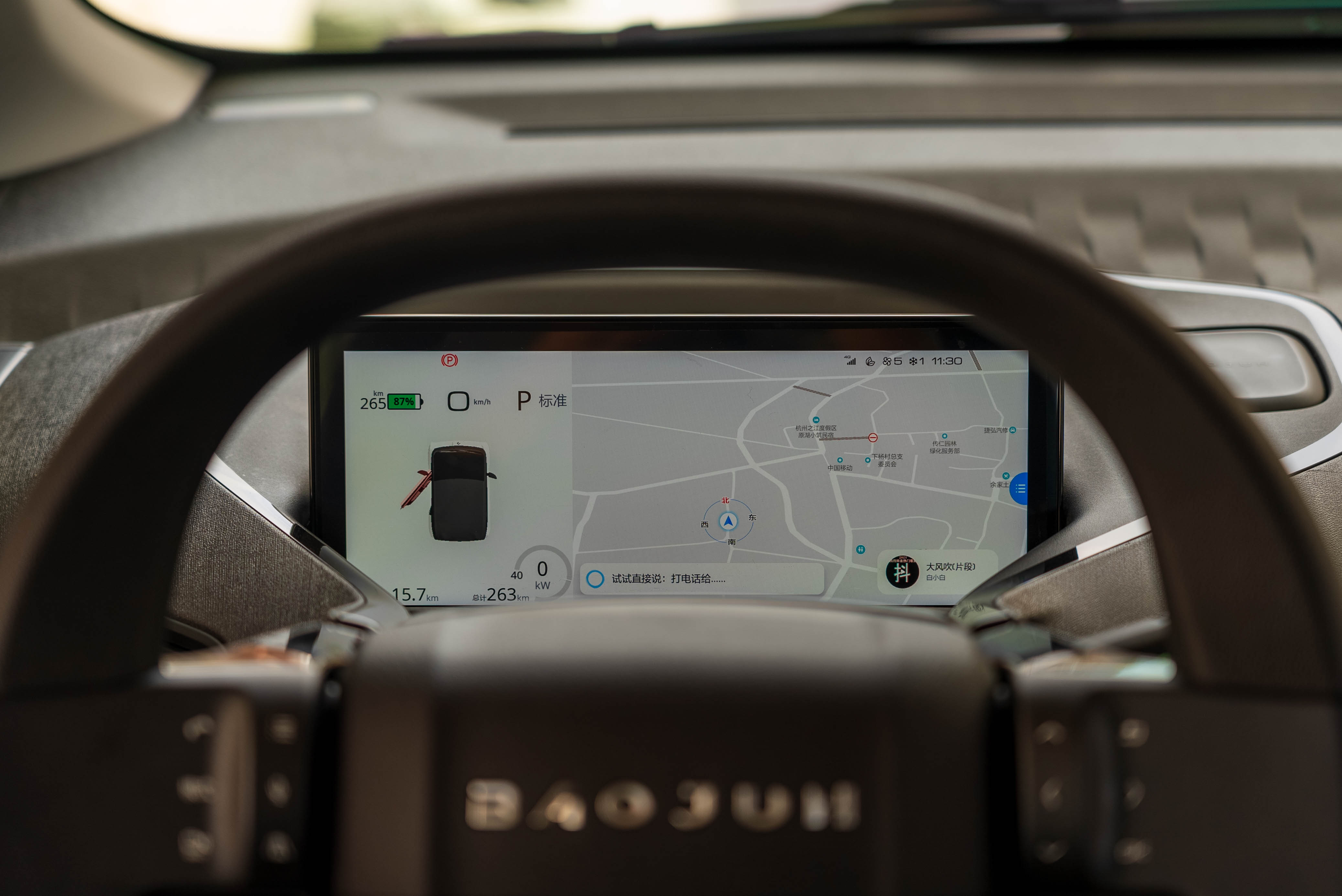
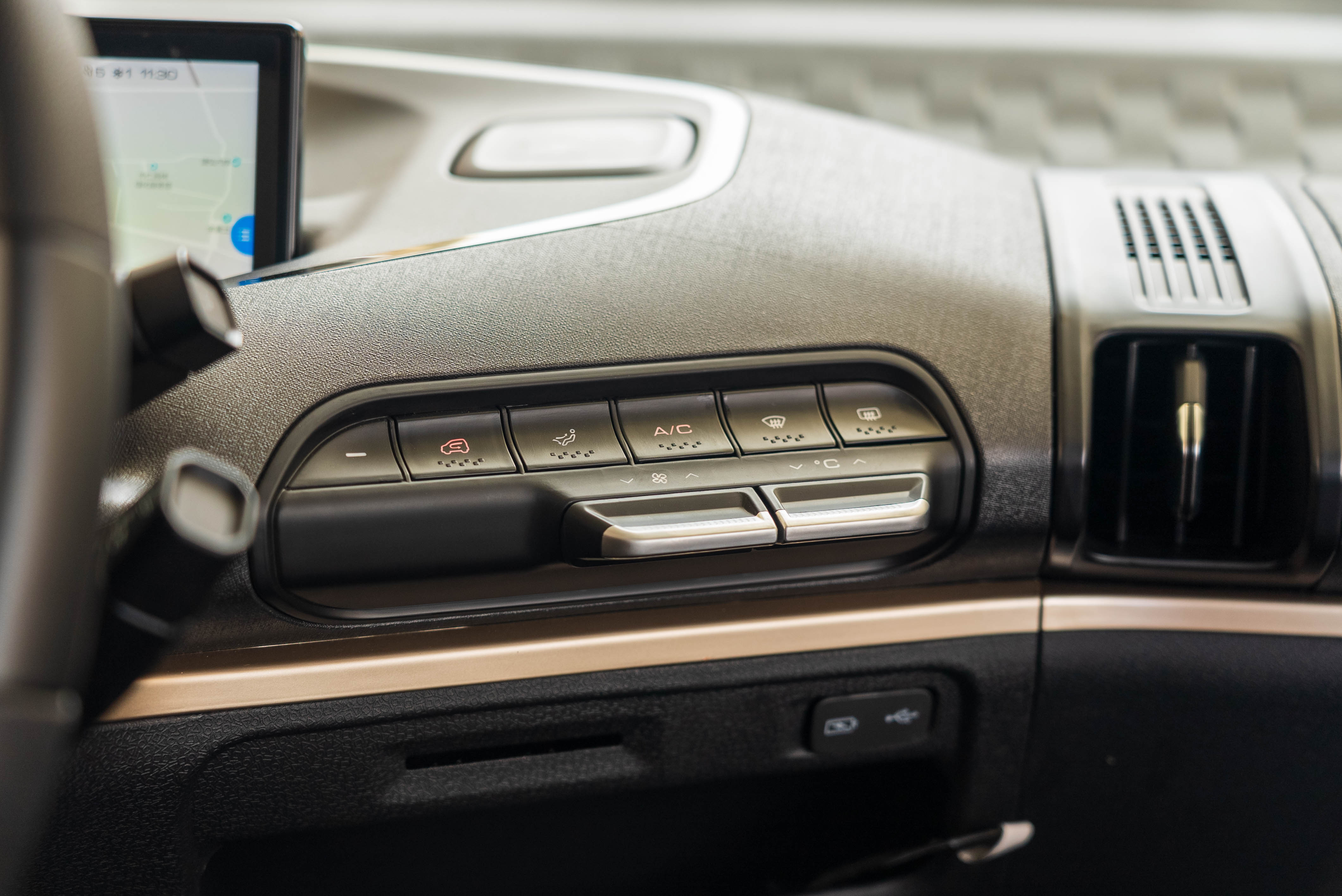
The overall interior design gives me a feeling of simplicity and delicacy, without too much fancy stuff, but the necessary atmosphere and quality are still there. This gives KiWi EV an advantage over MINIEV, which uses the same Wuling GSEV platform.
Regarding the KiWi EV’s ADAS configuration, because our car has not yet enabled the ADAS system, we have not conducted a detailed test. Specific data has not been released, but according to the data of its previous generation product, E300 Plus, the car has a total of 12 ultrasonic sensors, 1 millimeter-wave radar, and 4 panoramic cameras. I believe KiWi EV will not lag behind. Especially with the addition of 4 panoramic cameras to form a 360-degree panoramic reversing image, the already compact car will be even more comfortable when reversing.
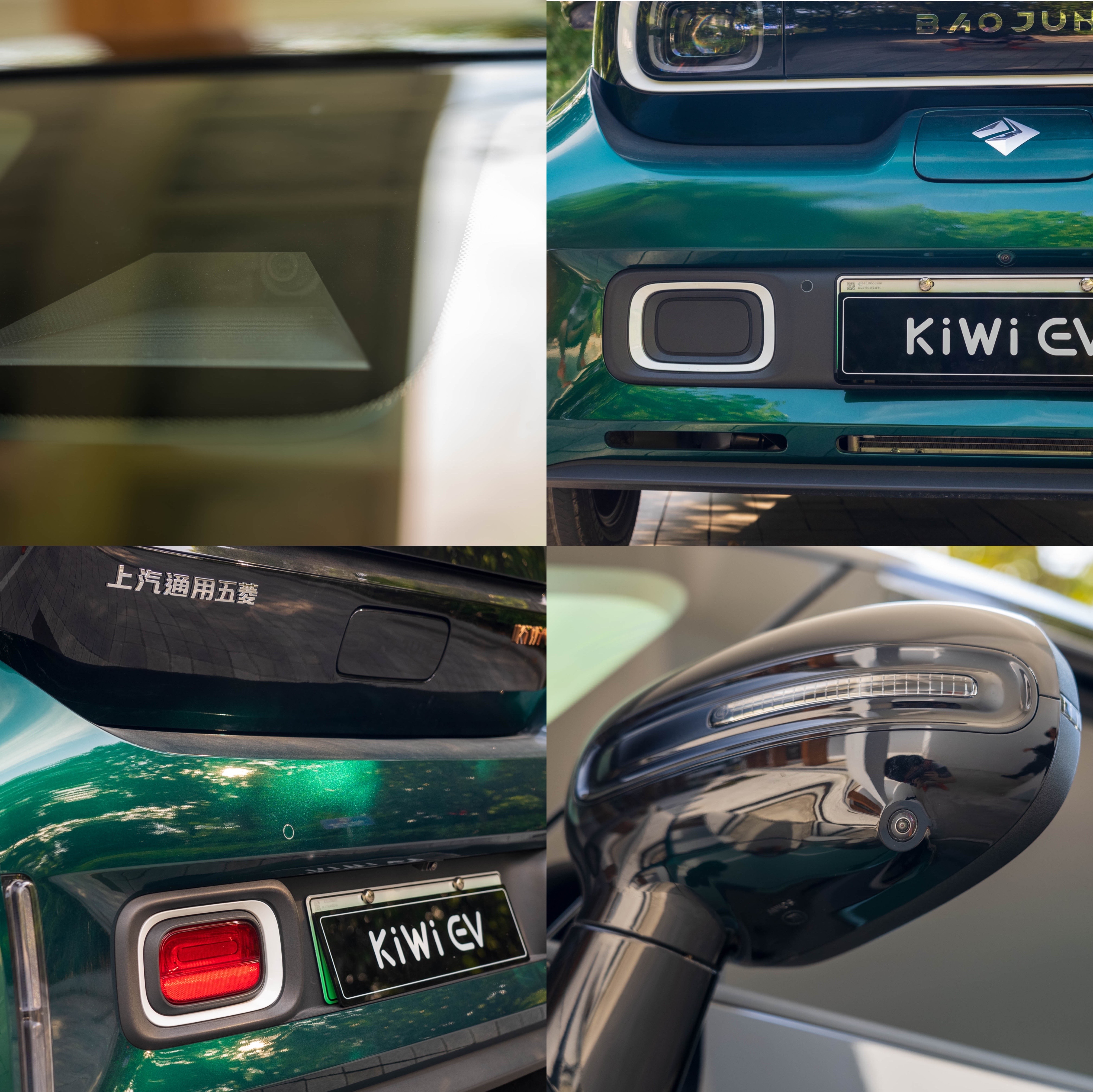

However, in terms of use, there are still many bugs in some designs.
Firstly, let’s talk about the steering wheel. Although the design of this steering wheel is pretty cool, its functionality is relatively rich compared to cars of the same level. But because it is a touch feedback design, my hand often accidentally touches the steering wheel control button during daily use, and sometimes the navigation is exited due to accidental touch, which can cause some trouble while driving.
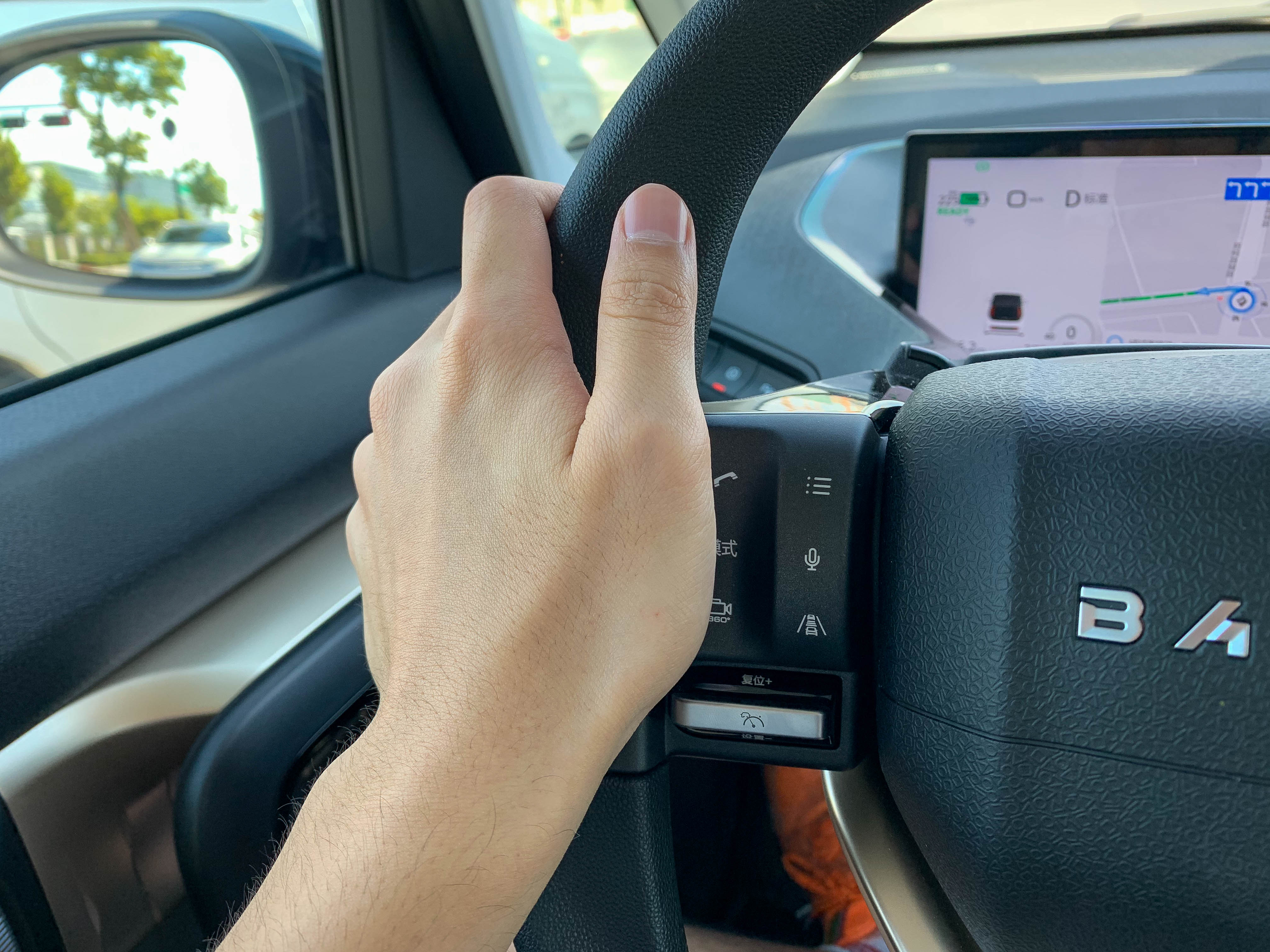
Secondly, the non-adjustable steering wheel also adds some trouble. Especially for male drivers with larger body sizes, it may be difficult to adjust the leg space properly and then reach the steering wheel; when the hands can comfortably control the steering wheel, the leg space will be very cramped.The golden trim strip below the steering wheel often blocks the 360-degree reversing image displayed on the dashboard during reversing. And the normal driving seat cannot see the reversing situation at all. With the unadjustable steering wheel, one must lean forward to see the situation behind, which is not convenient to use. Here, it is suggested to reduce the size of the golden trim strip, which can make it easier for the driver to see the rear image.
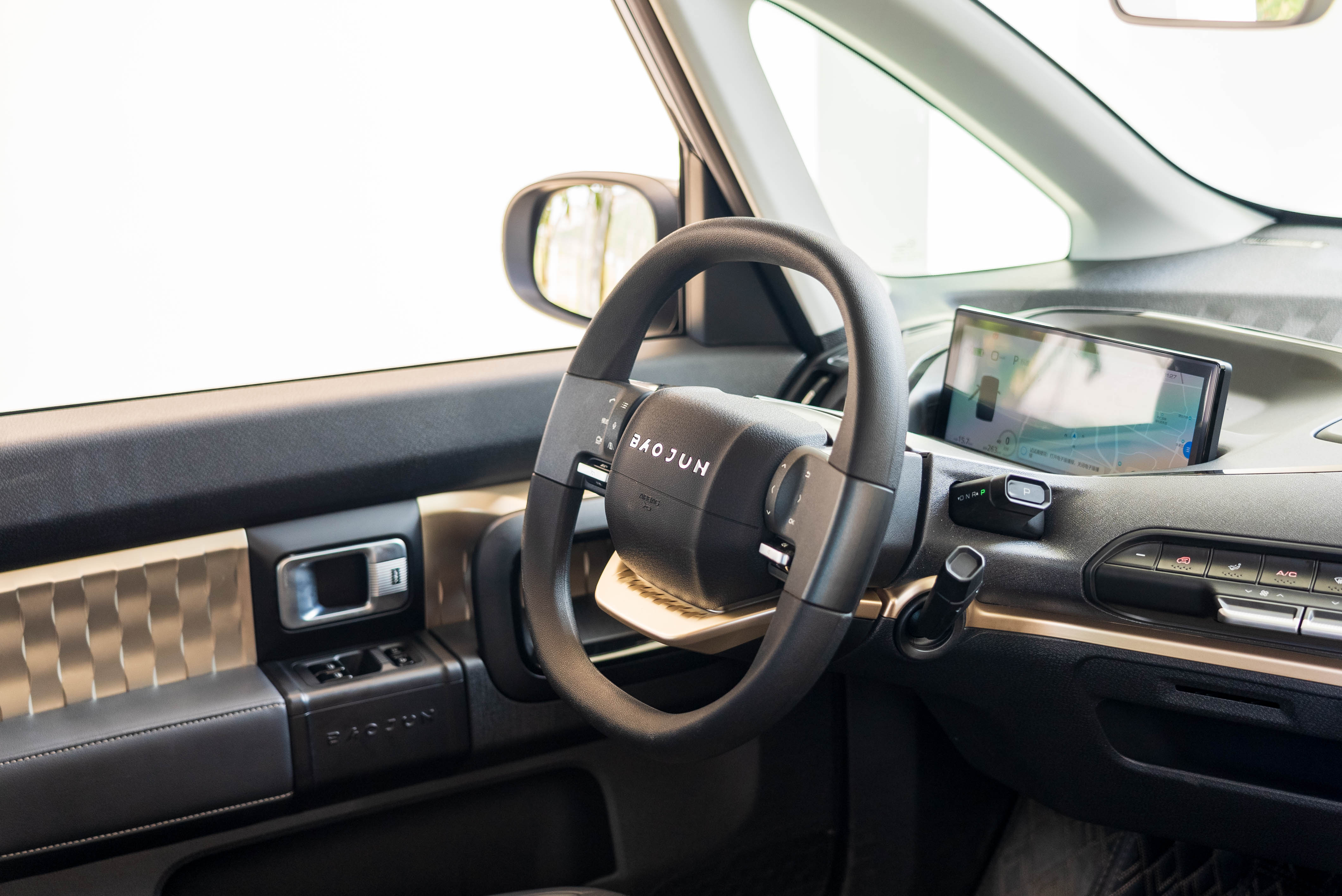
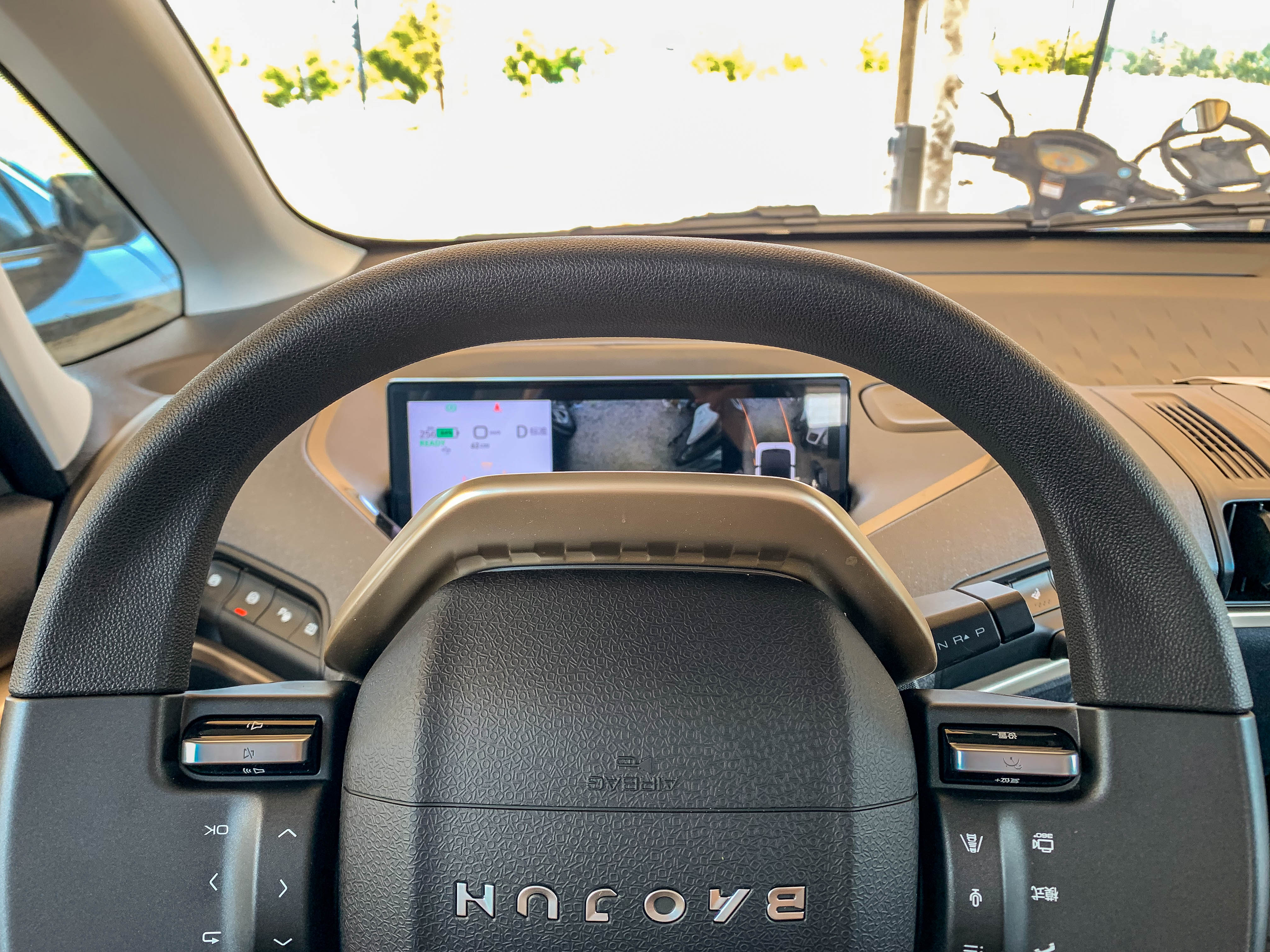
Finally, there is this extremely huge front panel, which will block a large part of the front view of the car. The blind spot in front of the car is still quite large while driving. In fact, the front windshield has reached the front of the car. But the blocked vision makes me have the illusion that the front of the car is still in front.
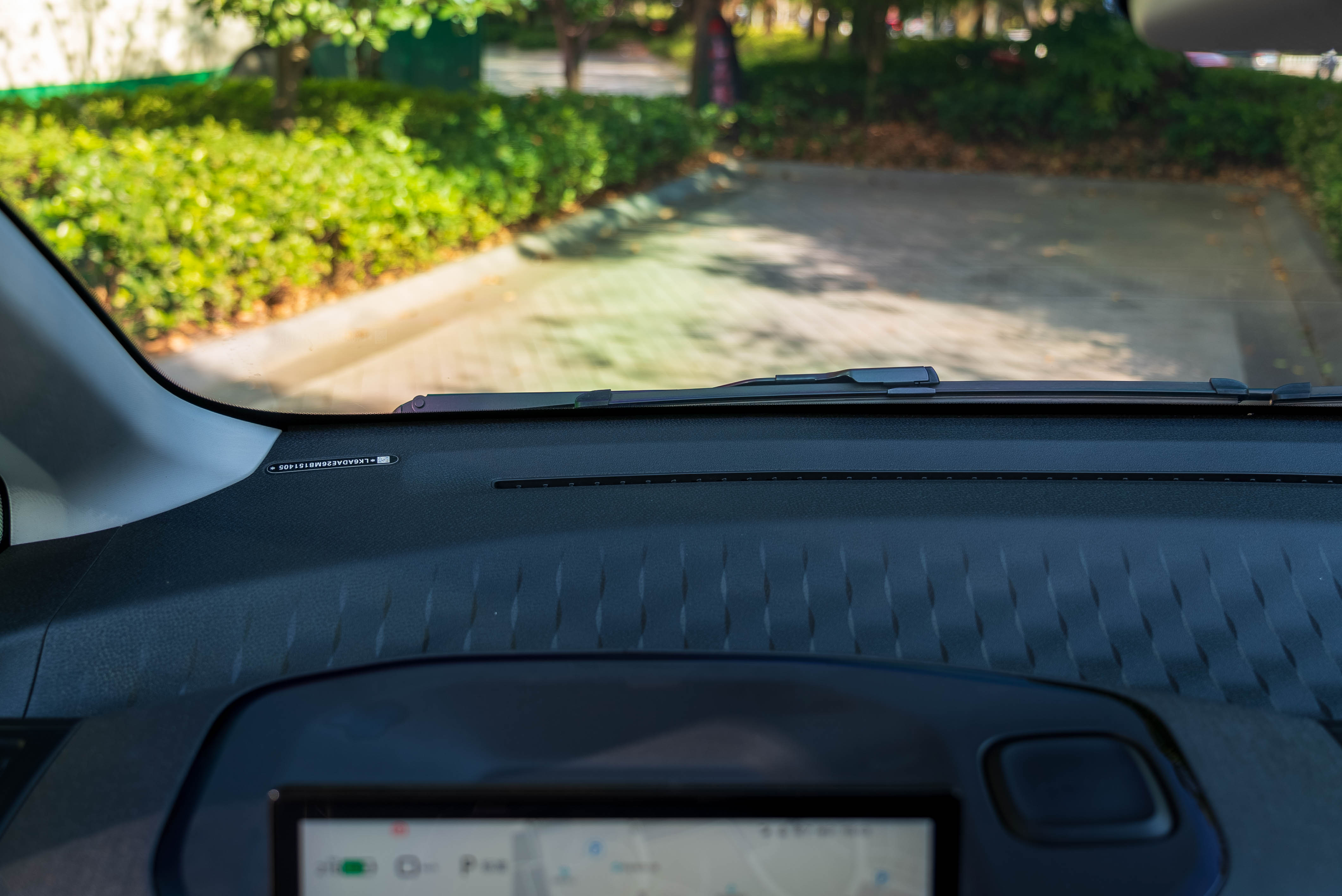
How is the driving experience?
People generally do not pay much attention to this A0 level electric vehicle, basically staying in the state of just enough. According to the comparison chart mentioned earlier, we can see that the overall performance of KiWi EV is not particularly impressive. But in terms of range and suspension, I think there are some surprises.
As an electric vehicle, especially a micro electric vehicle, the battery capacity is usually in the range of 30-45 kWh, and it is unlikely to have a super long range. To alleviate the range anxiety that electric vehicle owners often have, KiWi EV with an NEDC range of only 305 km must have more accurate performance of the range.
After my brief test, in the outdoor temperature of 30 degrees Celsius in Hangzhou, with the air conditioner at 5 gears and the temperature at the lowest, after 15.7 kilometers of actual driving on urban roads and city expressways, the displayed power dropped by only 18 kilometers, and the actual range and displayed power drop ratio is 1:1.14.
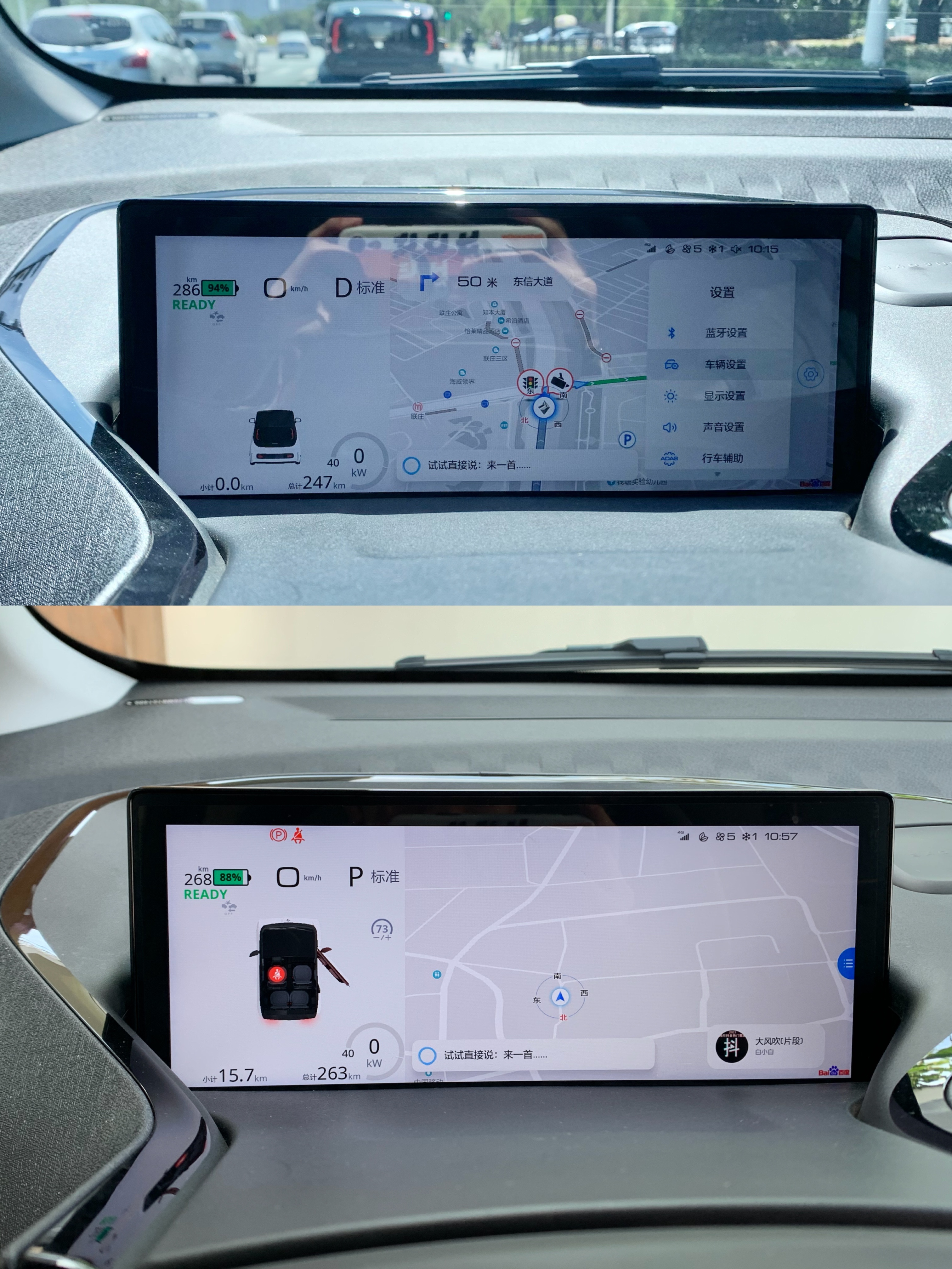
The lithium iron phosphate battery carried by KiWi EV can have a relatively accurate display of power drop, which still tests the manufacturer’s BMS and SOC algorithms. But this is ultimately a short and incomplete test. If there is an opportunity in the future, we will conduct more comprehensive testing.In terms of power and driving experience, the KiWi EV adopts a rare rear-drive form in the same level, equipped with a not too large 40 kW motor. The start-up acceleration feels very light, and the acceleration below 60 km/h is pretty good. After reaching 60 km/h, there is a slight power reduction. Due to the small size of the car and narrow tires, the overall handling performance of the car feels very light and effortless.
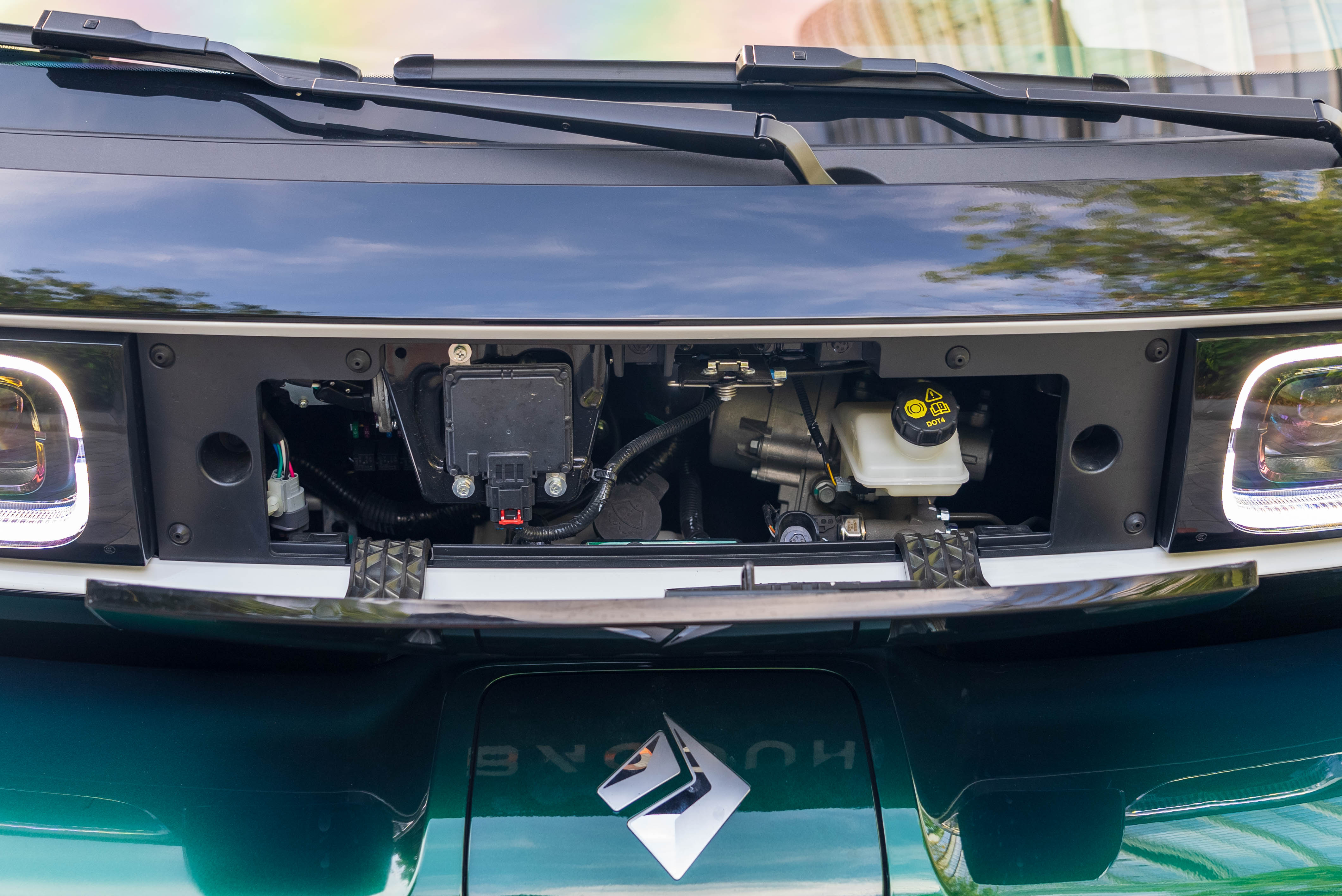
However, I was pleasantly surprised by the suspension setting. It adopts a front MacPherson independent front suspension and a rear double-wishbone independent rear suspension. Due to the independent rear suspension, the chassis’s shock-absorbing performance is excellent, without feeling loose. The overall feeling is compact and comfortable for daily driving. However, it is still limited by the 13-inch wheels. When encountering large potholes or road repair sections, the suspension can only shout, “I am willing, but not able!”

Conclusion
So what makes me feel like it’s a subversion of my expectations?
It’s easy to explain. Before I test drove the KiWi EV, I never thought that this A0-level microcar could be called a “car.” I always thought these cars were just tools for commuters under the license policy, models that had to be purchased reluctantly. Previously, I had a brief static experience with the MINIEV at the Shanghai Auto Show. The direction of the steering wheel and the extremely narrow interior space of the cargo version disappointed me. At that time, I really didn’t understand why anyone would buy this type of car? Why could this type of car with lower product competitiveness outrank higher quality competing products in sales? Will people really compromise and settle for this type of car for various reasons?
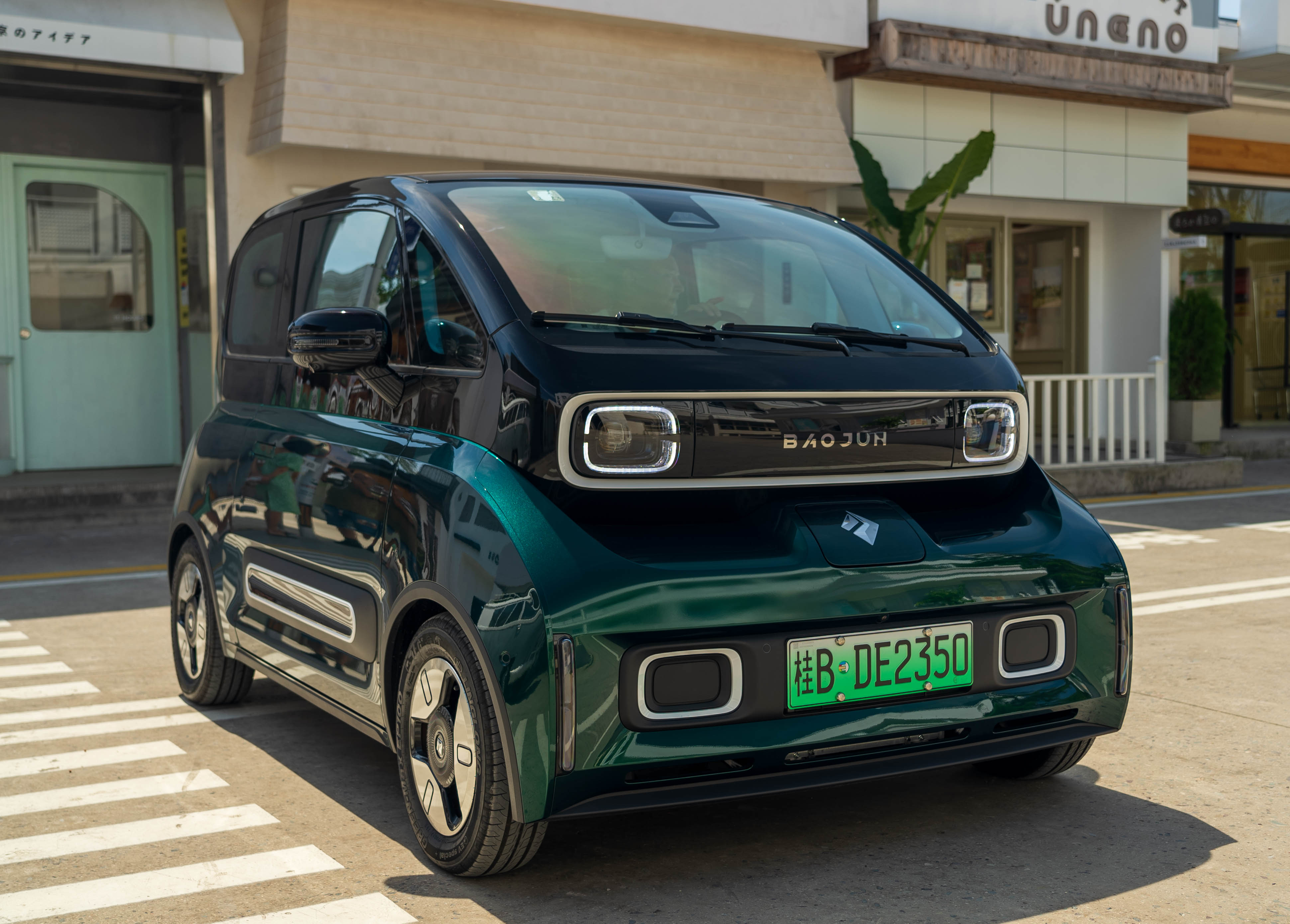
Well, when I started making money, I realized the value of money. In the Shanghai area, a car that starts at 30,000 RMB, can legally carry four people, and can enter the Shanghai Green License Plate Zone is indeed attractive. However, these cannot trigger my desire to buy one. I used to think that I had the same idea as the former BBC host “Gorilla” Jeremy Clarkson.
It’s better to ride public transportation than to drive a car that doesn’t excite you every day.But after driving the KiWi EV, I feel like I have found some answers. While not particularly fast, this car is agile and convenient. While not necessarily luxurious, the design of both the exterior and interior is exquisite. While it may not be able to carry my soul, at least it is a four-wheel two-door car that provides a comfortable means of transportation.
Even though it is a bit expensive, with the cheapest version costing around 70,000 yuan, and even though its competitors are aggressively vying for market share, the KiWi EV has shown me that A0 micro-cars are not entirely what I had imagined them to be. It has changed my perception and convinced me to accept this type of vehicle. At least, when a father (or mother) sees their child dancing with excitement while looking out a car window, they should feel grateful that they have a small car to drive – what a joy!
Honestly, thinking about this, I feel like I have come to a realization. I still have a passion for cars from the bottom of my heart, but my identity has changed from being a child who travels the world by car to someone who holds the steering wheel, and my standards have become increasingly demanding. At this moment, reflecting on the past, I realize that I have abandoned the purest love for cars.
Okay, I’m different from “King Kong”. I want to be the little kid who sits in the car and gets excited by the changing scenery outside the window forever.
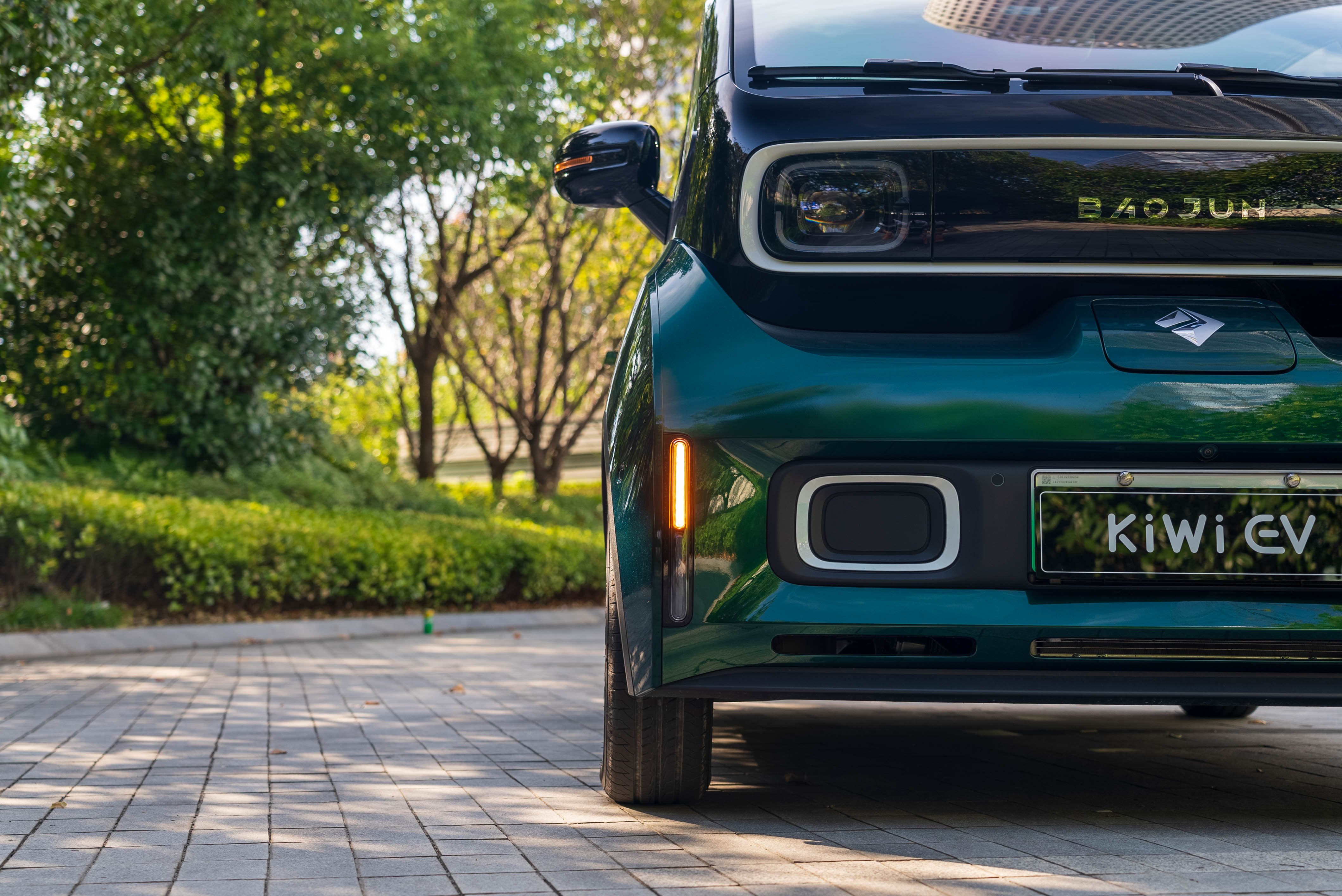
This article is a translation by ChatGPT of a Chinese report from 42HOW. If you have any questions about it, please email bd@42how.com.
